Natural Sciences
72nd Graduation: Doctoral Citations – CoNAS
Published
4 years agoon
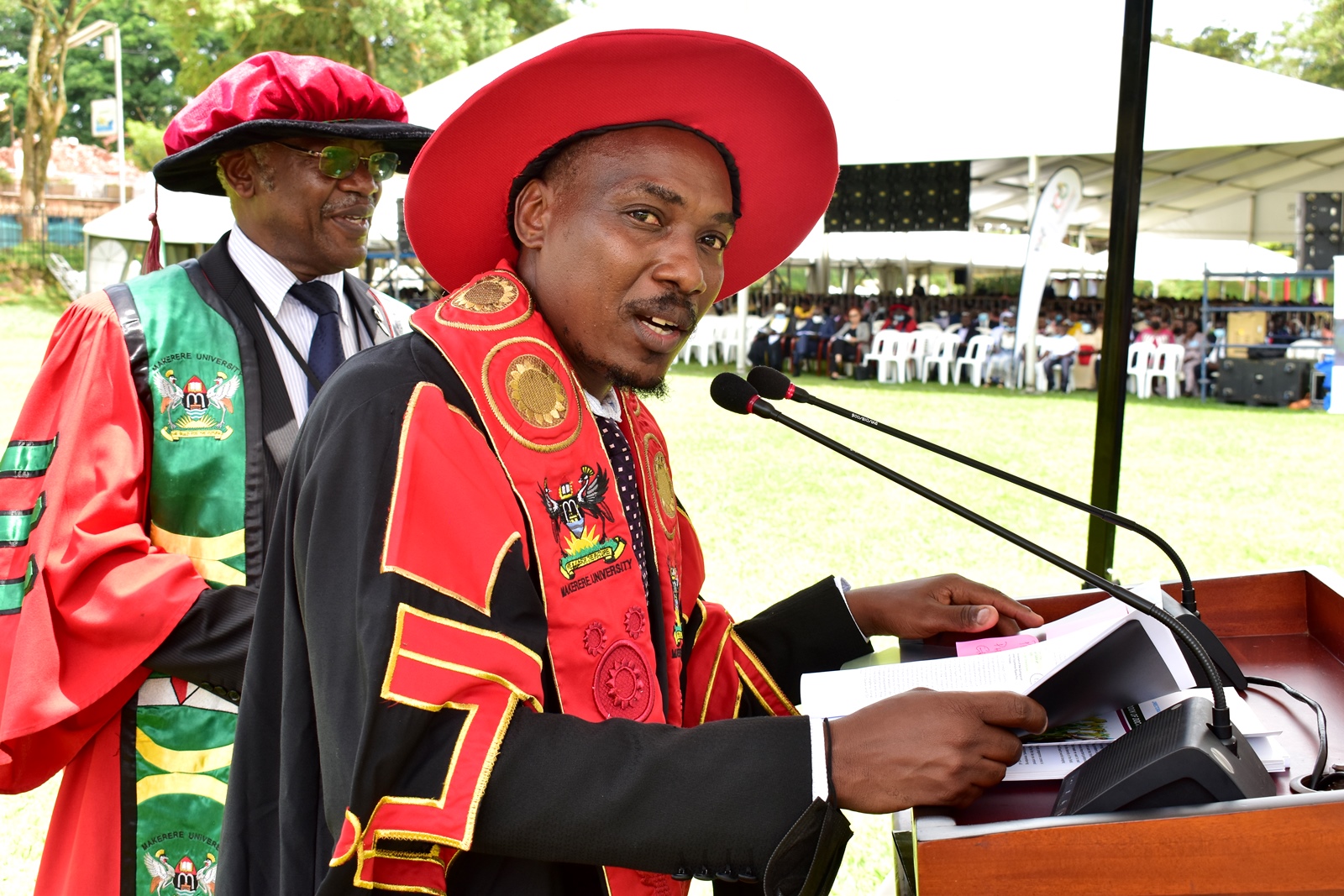
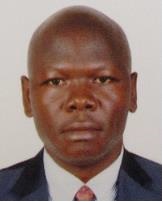
ADAKU Christopher
Chemical Structure and Properties of Anthocyanins from Selected Plant Species from Uganda.
Mr. ADAKU Christopher investigated a class of bioactive phytochemicals known as anthocyanins from selected indigenous plants, with the purpose of identifying ingredients for the development of nutraceuticals and for application as natural food colourants. This follows the increasing availability of natural health products with unsubstantiated health claims and the health concern associated with the use of synthetic food colourants. During the study, eleven new and seven known compounds were isolated and their properties deciphered. The compounds exhibited colour and stability required for food colourant application and showed remarkable antioxidant activity which is indicative of their potential beneficial health effects. These findings will lead to the development of nutraceuticals and other natural health products with guaranteed safety and efficacy. The isolated compounds can also be used as natural functional food colurants, especially for colouring refrigerated foods such as yoghurt, ice cream and beverages. This study was funded by SIDA through DRGT and MUTHI and supervised by Prof. Byamukama Robert and Prof. Kiremire Bernard (RIP).
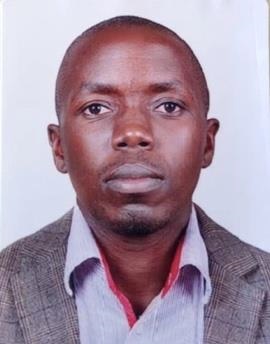
ANYWAR Godwin
Ethnopharmacology, cytotoxicity, antiviral and immunomodulatory profiles of medicinal plant species used by herbalists in treating people living with HIV/AIDS in Uganda
Mr. ANYWAR Godwin investigated the cytotoxicity, antiviral activity and immunomodulatory potential of medicinal plant species used by herbalists to treat people living with HIV/AIDS (PLHIV) in Uganda. The study was motivated by the fact that PLHIV widely use untested herbal medicines even when already on antiretroviral treatment. The results from this study showed several plant species are mainly used to treat opportunistic infections among PLHIV. Two of the most widely used plant species, Albizia coriaria and Warburgia ugandensis were highly toxic to the human glioblastoma cell line used (U87.CD4.CXCR4). Regression analysis also showed that the plant extracts had varying selective anti-HIV-1 activities in vitro. The plant extracts also elicited different immune responses by stimulating different cytokines from Peripheral Mononuclear Blood Cells (PMBCs). Godwin recommend testing of crude plant extract mixtures used by the herbalists, and isolating and testing pure compounds from the most promising plant species. The study was funded by the Consortium for Advanced Research Training in Africa (CARTA), and DAAD and supervised by Prof. Esezah Kakudidi, Dr. Andreas Shubert, Prof. Robert Byamukama and Prof. Christian Jassoy.
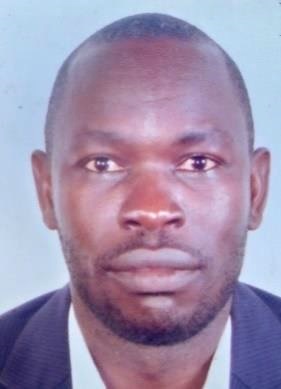
ENEKU John Paul
Optimization of the electrical resistivity of magnetron sputtered aluminium and boron co-doped zinc oxide thin films for solar cells.
Mr. ENEKU John Paul investigated co-doping of zinc oxide thin films with both aluminium and boron elements to develop a transparent thin film material of very low electrical resistivity for application as a transparent front electrode in thin film solar cells. This offers a low cost and eco-friendly alternative to the costly and toxic Indium Tin Oxide (ITO) electrode which currently dominates the solar cell market. The thin film based solar cells have the potential to significantly lower the price of photovoltaics based electricity. The investigation established that the co-doped zinc oxide thin film material can be used effectively as a transparent electrode in thin-film solar cells and can replace the costly standard Indium Tin Oxide (ITO). This study was funded by Makerere Universsity and International Science Program (ISP, Sweden) and supervised by Prof. Tom Otiti and Prof. Julius Mwabora.
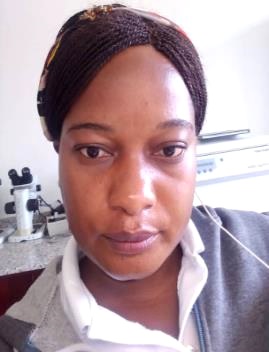
BUTTIBWA Mary
Utilizing heated pollen and androgenesis pathways for the production of haploids in cassava
Ms. BUTTIBWA Mary investigated how heat-treatment of pollen facilitates production of haploids in cassava. Pollen, a fine powdery substance that comes from the male part of flowers and an equivalent of sperms animals, can be heat-inactivated and used hasten cassava embryo development. Because cassava’s reproduction cycle is too long it is difficult to quickly develop new varieties. The haploid technology can shorten this by 50%. Using heated pollen in pollination fostered the development of cassava embryos that further grew into haploid plants in a short time. The heated pollen germinated on the stigma but no fertilization was achieved; however, embryo development was stimulated. Early embryo rescue techniques rescued immature embryos on an artificial growth medium and re-generated into plants. This work contributes to the genetic improvement of cassava. The study was funded by the Bill and Melinda Gates Foundation through The International Centre for Tropical Agriculture and was supervised by Prof. Arthur Tugume and Dr. Robert Kawuki.

INUWA Badamasi
Effect of xenoestrogenic substances on fish health and reproductive potential of Nile tilapia, Nile perch and lungfish from two-distinctly polluted sites of Lake Victoria: the “more polluted”
Mr. INUWA Badamasi studied the effect of xenoestrogenic substances on fish health and reproductive potential of Nile tilapia, Nile perch and lungfish from two-distinctly polluted sites of Lake Victoria: the “more polluted” (Kasenyi, Ggaba, Port bell, Jinja) and the “less polluted” (Kasensero, Bale, and Bukakata). The motivation for this research was the decline in the wild fish stocks population of Lake Victoria, attributable to several factors, including pollution. Specifically, the study examined the liver conditions and gonadal development of fishes under different levels of pollution. Severe liver alterations were higher in fishes from more polluted compared to those from less polluted areas. Indeed, the chemical contamination of Lake Victoria could have caused the liver lesions and other changes in the fishes. Overtime, such chemical contamination could lead to negative impacts on the consumption of fish and fish products if actions are not taken to mitigate the risks. This study was funded by the Nigerian Federal Ministry of Education and supervised by Assoc Prof Charles Masembe and Dr. Robinson Odong.
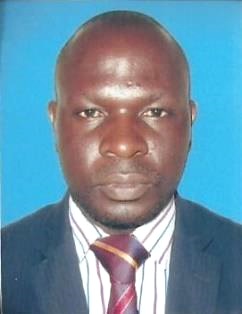
KITO Luliro Silas
The Numerical Range of Linear Relations and Stability Theorems.
Mr. KITO Luliro Silas studied the numerical range and stability theorems of linear maps on some mathematical spaces with the purpose of establishing the existence and uniqueness of solutions (solvability) to linear relation inclusions. In this study, he explored the effects of small alterations on certain maps between special spaces that are of mathematical interest in solving certain differential equations. The study found that within a certain degree of change, a small alteration on the map will not affect a particular set of characteristics of the map. These results are useful but not limited to; solving problems formulated when modelling airflow around an obstruction for example calculation of forces and moments on aircrafts, modelling fission weapon detonation, determination of mass flow rate of petroleum through pipelines, predicting weather patterns and ocean currents, solving fluid dynamics problems that require computation of fluid properties such as flow velocity, pressure, density and fluid temperature as functions of space and time. This study was funded by SIDA and was supervised by Assoc. Prof. Gerald Wanjala, Dr. Saul H. Nsubuga, Dr. Vincent. A. Ssembatya and Dr. Alex B. Tumwesigye.
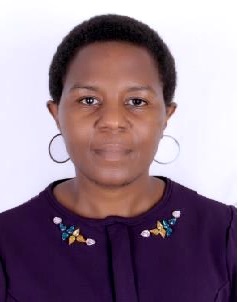
KYOMUHANGI Annet
Reduced Modules Relative to Functors
Ms. KYOMUHANGI Annet’s study focused on the description of reduced modules and their dual using functors. She introduced and studied properties of a functor that measures how far a module defined over a commutative ring is from being reduced. She also found a machinery that allows one to associate a nil ideal to every ring. Since reduced modules are dualisable, Annet studied properties of their dual known as coreduced modules. She further introduced functors that describe coreduced modules and studied their properties. Moreover, she found that reduced modules simplify computations of local cohomology while coreduced modules simplify computations of local homology. The study was funded by Makerere-Sida bilateral programme (2015-2020); Project 316: Capacity building in Mathematics and its applications. Ms. Kyomuhangi was supervised by Dr. David Ssevviiri and Dr. Alex Samuel Bamunoba, both from Makerere University.
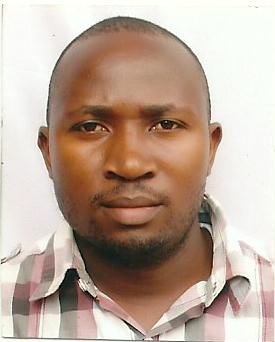
MAYANJA Edison
Mathematical Models for HIV-HCV Co-infection Dynamics under Various Control Strategies
Mr. MAYANJA Edison formulated mathematical models to study the dynamics of Human Immunodeficiency Virus (HIV) and Hepatitis C virus (HCV) co-infection. The HIV-HCV co- infection mathematical models which had been developed before, either ignored infection stages or considered HCV in only two stages of infection: the acute and chronic infection. However, the chronic stage of HCV is very long and consists of infected individuals that are asymptomatic yet infectious. Thus, this required deep analysis that had not been fully elucidated. In his study, he analysed the HCV chronic stage split it into: before onset of cirrhosis and its complications (Latent stage) and after onset of cirrhosis (Advanced stage). He used these mathematical models to investigate how HIV infection impacts the dynamics of HCV infection and vice versa. The study revealed that, increasing the rate of enrolment on HIV treatment reduces HCV prevalence and vice versa. Transmission probability per sexual contact and average number of sexual partners acquired per year were equally likely to result into increased HIV and HCV infections and these parameters were the most sensitive in increasing each of HIV and HCV infections. The study was funded by SIDA and was supervised by Prof. Livingstone S. Luboobi, Prof. Juma Kasozi, and Dr. Rebecca N. Nsubuga.
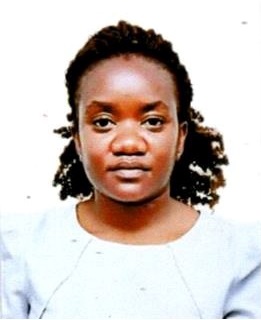
NABAWANDA Olivia
Flattened partitions: Pattern Avoidance and Behavior of Permutation Statistics.
Ms. NABAWANDA Olivia studied a sorting procedure (run-sort function) on permutations, where runs are rearranged in lexicographic order. The aim of the study was to investigate the behavior of the run-sort function with different permutation statistics namely runs, descents, peak-values and left-right minima. Olivia used Mathematica, a computation/mathematical software to generate the necessary data, which in turn she used in combination with bijective proofs and generating functions as the main tools. New combinatorial interpretations to several counting sequences namely A124324, Catalan, Fibonacci, Motzkin and Powers of two among others were provided as already indexed on the On-line Encyclopedia of Integer Sequences (OEIS) database, hence contributing to the existing body of knowledge. She also proved that the descent generating polynomials for these permutations are real rooted, and satisfy an interlacing property similar to that satisfied by the Eulerian polynomials, which are known to be real-rooted. Moreover, the run-sort function was found to possess interesting probability distribution properties. The research findings exhibited an interplay between discrete mathematics, probability theory and complex analysis. The study was funded by SIDA and supervised by Dr. Alex Samuel Bamunoba, Prof. Paul Vaderlind and Prof. Fanja Rakotondrajao of Antananarivo.
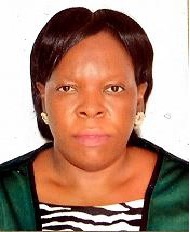
NALULE Rebecca Muhumuza
Hierarchical Models and Spatio-Temporal Processes In Data Analysis
Ms. NALULE Rebecca Muhumuza studied Hierarchical Models and Spatio-Temporal Processes in Data- Analysis with the aim of analyzing data which possesses both temporal and spatial dependence. She developed a non-linear general spatio-temporal model by extending Serfling’s model. Rebecca applied the theoretical findings to data of an outbreak of influenza in Southern Germany between 2001 and 2007. She also extended the random effect model by introducing the correlation coefficient between random effects in its definition. She again considered the problem of Bayesian estimation of heterogeneity parameter in the generalized random effects model where a comparison between the obtained results with the existing approaches was made. Rebecca used the findings for consensus building in meta-analyses of measurement results for the Newtonian constant of gravitation data and for the effectiveness of antiretroviral pre-exposure prophylaxis in preventing HIV infection. The study was funded by SIDA and was supervised by Prof Olha Bodnar, Dr. John Bosco Asiimwe and Dr. Rebecca N. Nsubuga.

NANFUKA Mary
The use of Splines for solving ill-posed problems, with application to the Cauchy problems for the Heat and Helmholtz equations
Ms. NANFUKA Mary developed a regularization procedure based on splines. The procedure was used to solve the Cauchy problems for the heat and Helmholtz equations, which are ill posed problems. The Cauchy problem for the heat equation had been previously solved by the Fourier transform method. The method, assumed that the time derivative, represented a periodic function which is not realistic. Thus, as an alternative, Mary approximated the time derivative by a cubic smoothing spline. The spline method effectively bounded the errors in the output solution according to the stability estimates. The Cauchy problem for the Helmholtz equation was regularized, by introducing a bounded approximation of the second derivative in the x-variable using cubic smoothing splines. A bound for the approximate
derivative was derived. The stability estimates, showed that the method worked pretty well and produced accurate results. The newly developed method was applied to an industrial setting for determining the surface temperature of steel and good results were achieved. The method is recommended for use for the solution to inverse problems that occur in the engineering and medical fields. The research was funded by Sida and supervised by Dr. Fredrik Berntsson, Dr.Godwin Kakuba and Assoc Prof. John Mango.

OCHEN William
Measurement and Modelling of Residual Stress in Porcelain Tiles Formulated from Different Quartz Particle Sizes in Uganda
Mr. OCHEN William studied residual stress in porcelain tiles formulated from different quartz particle sizes in Uganda. He measured residual stress using X-ray diffraction method, and modeling based on finite element method using abaqus software. His study was prompted by numerous complaints concerning the strength of the locally manufactured tiles. His study found out that residual stress decreases with an increase in quartz particle size over a range of 45-200μm. The decline in residual stress is attributed to the formation of cracks, which affects strength and hardness of the tiles. He further noted that upon sintering at 13000C, tiles with quartz particle size of 90μm exhibited properties that satisfied the ISO 13006 standard. His study therefore recommends the idea of fine quartz milling in a range of not more than 90μm. This study was funded by DAAD and supervised by Prof. Florence Mutonyi D’ujanga and Dr. Bosco Oruru.
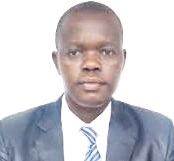
OKELLO Omwonylee Joseph
Limiting Behaviours of the Longest Gaps Between Occurrence Epochs in Poisson Processes.
Mr. OKELLO Omwonylee Joseph investigated the asymptotic properties of longest gaps between occurrence epochs in Poisson processes using the theory of large deviations, based on the laws of large numbers. To do this, the global estimation of the distribution functions of longest gaps was derived with the help of discretization argument and the Slivnyak’s formula of Palm theory. The derived global estimation was then used to achieve Laplace transform asymptotics of the longest gaps. Through the application of Fenchel-Legendre transform, it was found out that the longest gaps satisfy two large deviation principles with exponential and power rate functions. Since this study was about the probabilistic analysis of rare events, the results not only fill the literature gaps but also provide a very useful planning tool to insurance companies, risk analyst, department of disaster preparedness, operation managers and others. The study was funded by SIDA and was supervised by Dr. Xiangfeng Yang; Dr. Richard Awichi Opaka and Dr. Fred Mayabala.
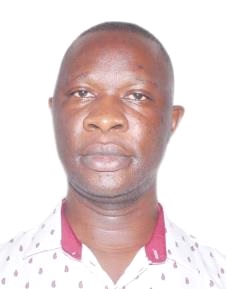
SSENYUNZI Richard Cliffe
Modelling Precipitable Water Vapour Using Global Navigation Satellite System Data over the East African Tropical Region.
Mr. SSENYUNZI Richard investigated the temporal and spatial variability of the zenith total delay and precipitable water vapour (PWV) data over the East African tropical region. The PWV data was collected from 13 geodetic permanent GNSS stations for the years 2013 to 2016. Lack of key variables such as the atmospheric water vapour, has been affecting the accuracy of weather predictions over the East African tropical region. The lack of this important parameter has been partly due to insufficient data and very scarce and unreliable tropospheric water vapour monitoring instruments in the region. In this study, the PWV, pressure and the weighted mean temperature linear models have been developed. The site-specific models developed can be utilized to supplement the GNSS and the weather stations data over the thirteen stations since they can provide estimates of nearly a similar degree of precision compared to the measured values. The study was funded by the African Development Bank and supervised by Prof. Florence Mutonyi D’ujanga and Dr. Bosco Oruru.
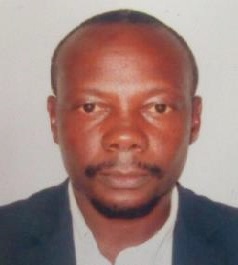
WAMONO Felix
Contributions to reduced rank regression modelling with applications to small area estimation.
Mr. WAMONO Felix studied the problem of decomposing residuals in the GMANOVA-MANOVA model with rank restrictions on parameters with applications in small area estimation. Firstly, Residuals in the GMANOVA-MANOVA model with rank restrictions on the mean parameters was considered. The main objective was to define residuals useful for evaluating the reduced rank restriction model. We decomposed linear spaces into four subspaces as it can be done for the Extended Growth Curve model with two “profiles”. The new residuals were defined by orthogonal projections on these subspaces. It was discussed how the new residuals could be used to test model assumptions. Secondly, Survey data from Uganda, including the 2014 Uganda Population and Housing Census data was analysed using small area estimation methodology. The GMANOVA-MANOVA model with rank restrictions on parameters was used to estimate the small area means. This study was funded by SIDA and was supervised by Prof. Dietrich von Rosen, Prof. Martin Singull, Assoc. Prof. Leonard Atuhaire and Dr. Innocent Ngaruye.
Browse Citations by College below:
< Director’s Message | CAES | CoBAMS | CoCIS | CEES | CEDAT | CHS | CHUSS | CoNAS | CoVAB | LAW | MUBS >
You may like
-


Makerere University Launches Knowledge-Sharing Platform to Drive Innovation and Economic Growth
-
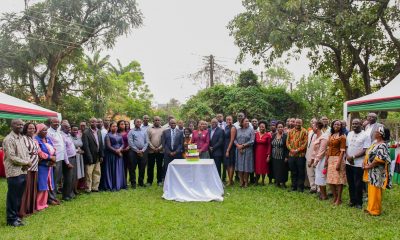

Makerere University CoBAMS Staff celebrate 2025 achievements
-


Makerere University Leaders Call for Excellence in Research and Supervision as Academic Staff and PhD Students Receive Certificates
-


Makerere University Explores Strategic Partnership with Tsinghua University in Safety Science, Disaster Resilience and Public Health
-


Makerere University and SoonPay Sign Landmark MoU to Champion Blockchain Innovation and Financial Inclusion Across Africa
-
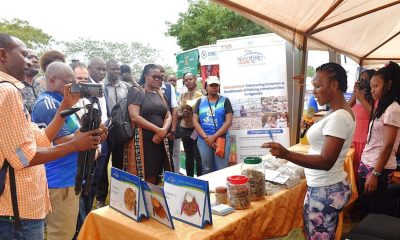

Jinja Fish Festival: Mak Recognized for its outstanding contribution to the Development of the Fisheries Sector
Natural Sciences
Jinja Fish Festival: Mak Recognized for its outstanding contribution to the Development of the Fisheries Sector
Published
3 weeks agoon
December 8, 2025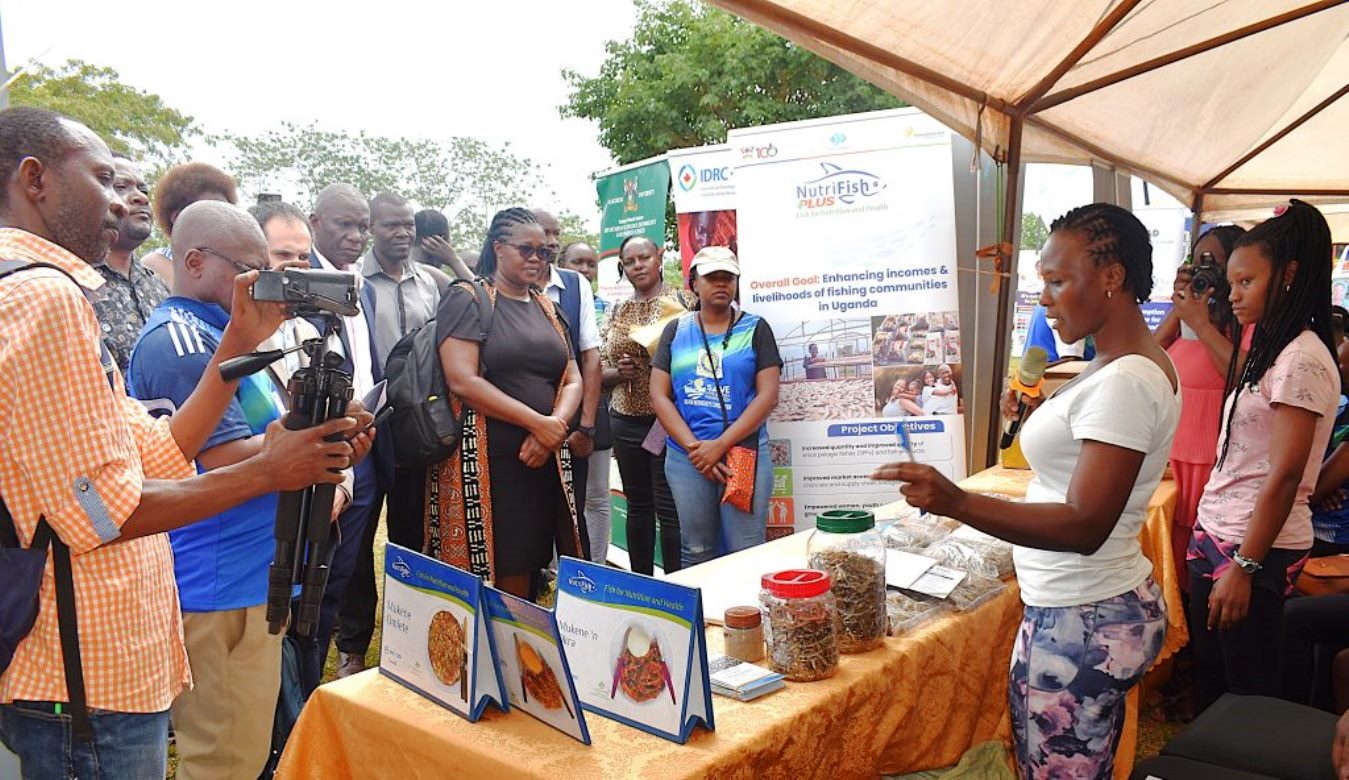
Makerere University, through the College of Natural Sciences (CoNAS), has been recognized for its outstanding contribution to the development of the fisheries sector in Uganda. The award was presented during the Sustainable Fisheries, Aquaculture, and Environmental Awards Ceremony at the 7th edition of the Jinja Fish Festival, held on 6th–7th December 2025 at Across the Nile Resort, along the banks of the River Nile in Njeru Municipality.
Renowned for showcasing diverse fish cuisines and cultural exhibitions, this year’s festival aimed to promote knowledge exchange, raise awareness, and highlight recent developments around Lake Victoria.

Launched in 2018, the Jinja Fish Festival has become a key platform for the public and stakeholders to learn about sustainable fisheries and the vital role of fish in livelihoods and nutrition. It also provides an avenue for fisheries stakeholders to deliberate on strategies to improve and sustain the sector.
The event includes the Lake Victoria Marathon, Nalubaale boat rowing competitions, a high-level fisheries forum, workshops, and exhibitions. It is organized by the Lake Victoria Fisheries Organization (LVFO) in partnership with the Directorate of Fisheries Resources, Sustainable Fisheries Initiative (SFI), Uganda Fish Processors and Exporters Association (UFPEA), and the International Fish and National Organizing Committee. It is funded by GIZ–SAF Project, the Food and Agriculture Organization (FAO), the International Fund for Agricultural Development (IFAD), and Enabel.
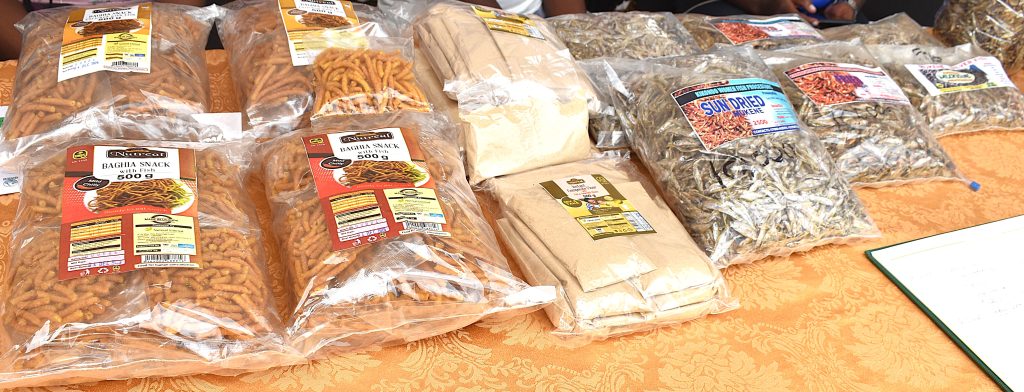
National Fisheries and Aquaculture Forum
A key highlight of the festival was the National Fisheries and Aquaculture Forum, themed “Promoting Sustainable Fisheries and Aquaculture through Ethical and Inclusive Blue Economy Practices.” The forum featured panel discussions on:
- Aligning Uganda’s Blue Economy with global and regional fisheries management frameworks.
- Adoption of climate-smart technologies in fisheries and aquaculture.
- Integration of business strategies and human rights principles into the fisheries and aquaculture value chain.
- Sustainable development of the fisheries and aquaculture sector.
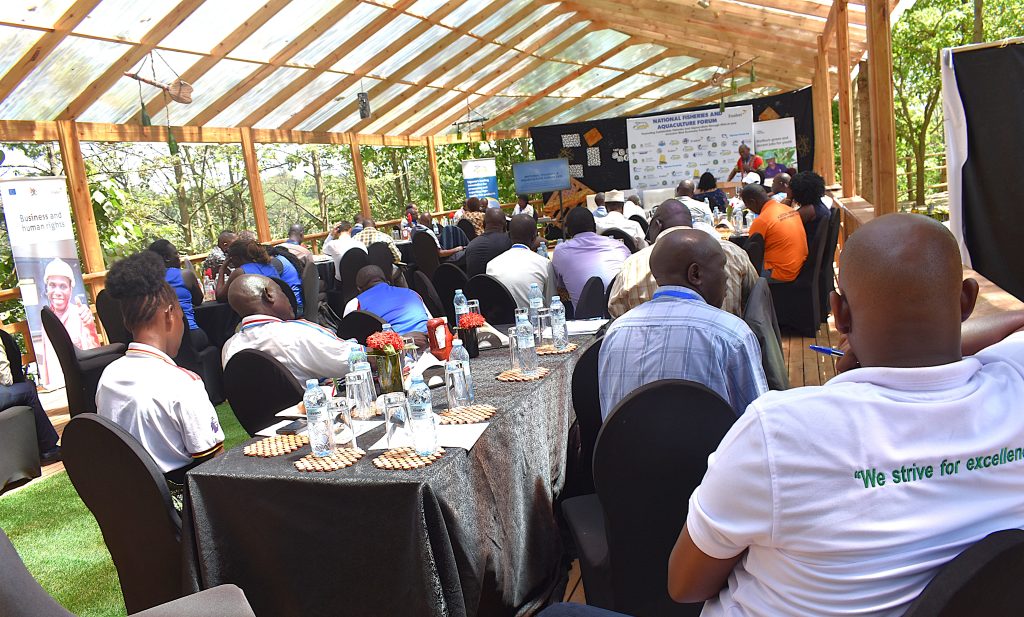
Participants emphasized the importance of strengthening value chain governance, scaling up innovations, and aligning initiatives with youth employment opportunities.
Delivering the keynote address, Mr. Richard Ogutu-Ohwayo, Coordinator at African Lakes Network and Independent Researcher, highlighted the urgent need to address “dirty fish” corruption, improve fisheries resource management through effective policies, and increase human resource capacity within the sector. Dr. Odongokara Konstantine, a Research and Policy Expert, emphasized domesticating international policies into Uganda’s aquaculture practices and building stakeholders’ capacity to access regional and global opportunities.
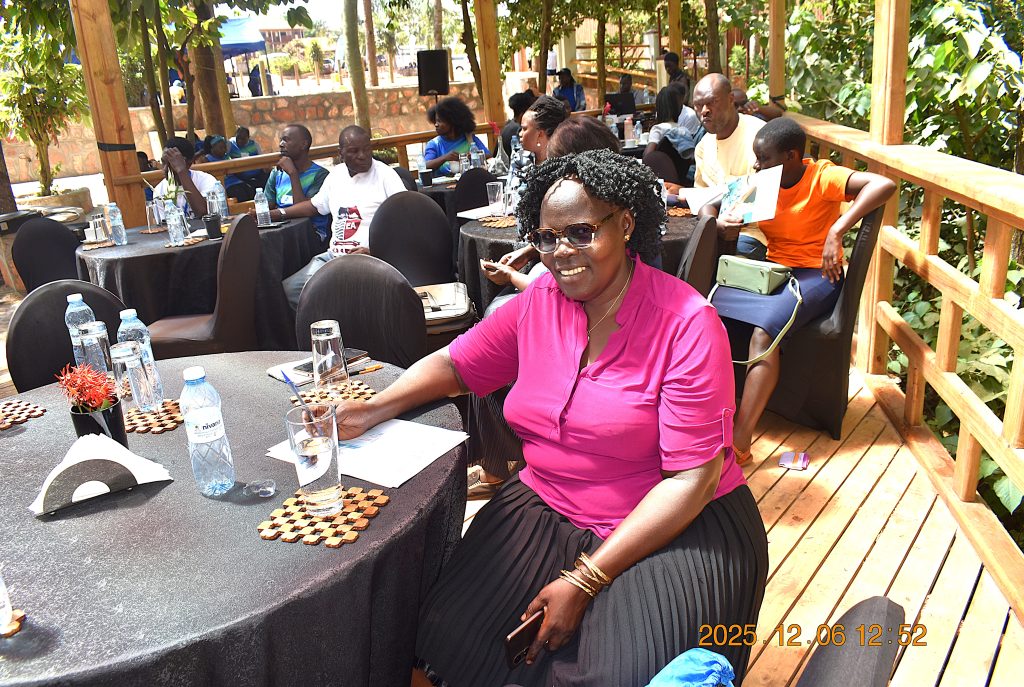
NutriFishPlus Project Participation in the Festival
The NutriFishPlus Project team, along with students from CoNAS participated in the 7th edition of the Jinja Fish Festival on 6th and 7th December 2025. Led by Ms. Nelly Badaru, Gender Expert on the Project and Ms. Juliet Ogubi Nafula, PhD student in the Department of Zoology, Entomology, and Fisheries Sciences at CoNAS, the team showcased products developed under the project and educated participants on the nutritional benefits of small pelagic fishes.
In its first phase, titled NutriFish, Makerere University researchers, led by Dr. Jackson Efitre, in collaboration with the National Fisheries Resources Research Institute (NaFIRRI – NARO), NUTREAL Limited, and McGill University, Canada, developed five high-value nutritious products, including baby food, sauce, maize meal, snacks, and seasoning, using Mukene (silverfish). The team also published a Mukene recipe book, containing 16 recipes rich in protein, calcium, zinc, and iron.
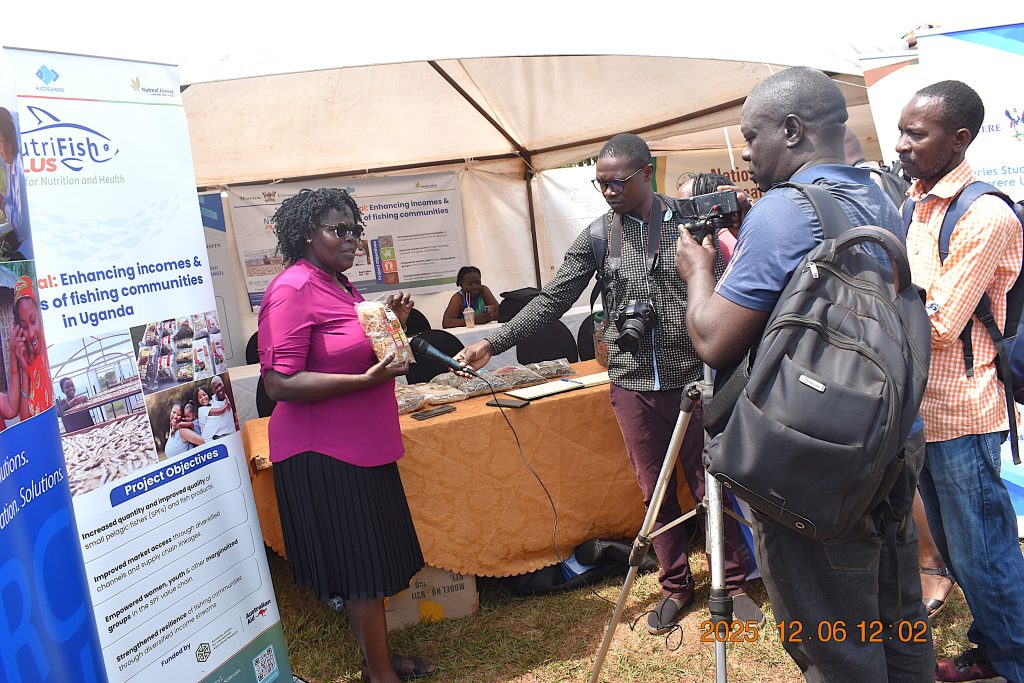
Through the project, fishers gained access to loans for purchasing boats and fish containers that improve hygiene and product quality. Two enterprise fishing groups, with over 70 boats, were established to ensure consistent supply and standards. Researchers also developed the eCAS system, an application for tracking fish catches. By September 2022, 8,960 catch records had been transmitted through the system, which is now used by over 200 stakeholders, including the Directorate of Fisheries Resources and the Fisheries Protection Unit, helping prevent overfishing.

Other achievements registered under the project included the development of solar tent driers – greenhouse-like structures that reduce the risk of contamination and provide clean and efficient storage and drying, especially during the wet season subsequently reducing post-harvest losses. The project conducted awareness training for 326 people (200 women) to reduce gender inequalities. As a result, domestic violence dropped by 30%, and the number of women in the fish value chain increased. The project also trained eight Graduate students, who have gained valuable skills and knowledge thus boosting critical human resource needs in the fisheries sector.
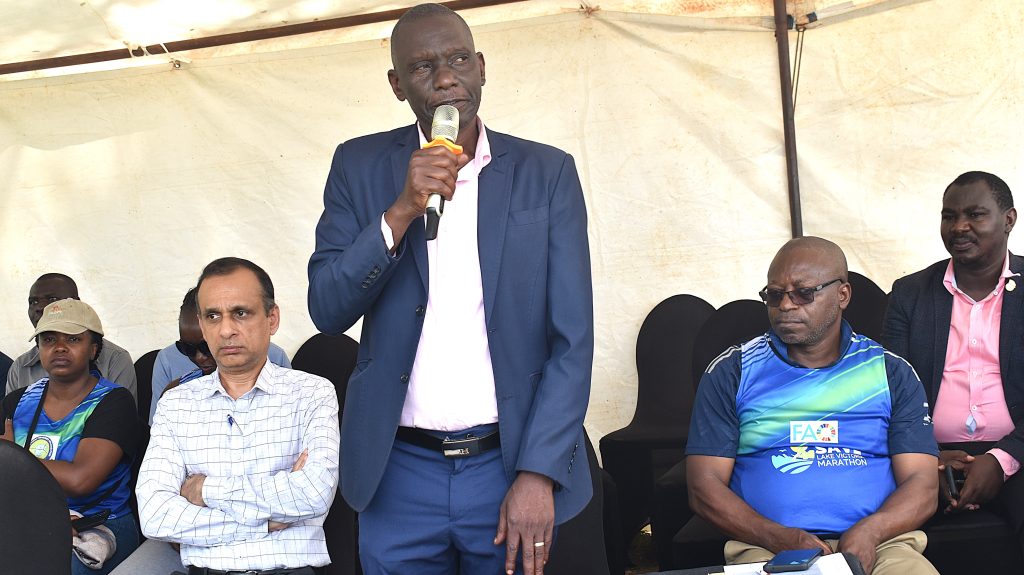
Other exhibitors at the festival included (NaFIRRI – NARO), FAO, INNOECOFOOD Project at Makerere University, the International University of East Africa, Busitema University, SEETA University (Science, Environment, Engineering, Technology, and Agriculture), Yalelo Uganda, and Preventive Care International, all showcasing emerging technologies and innovations in fisheries.
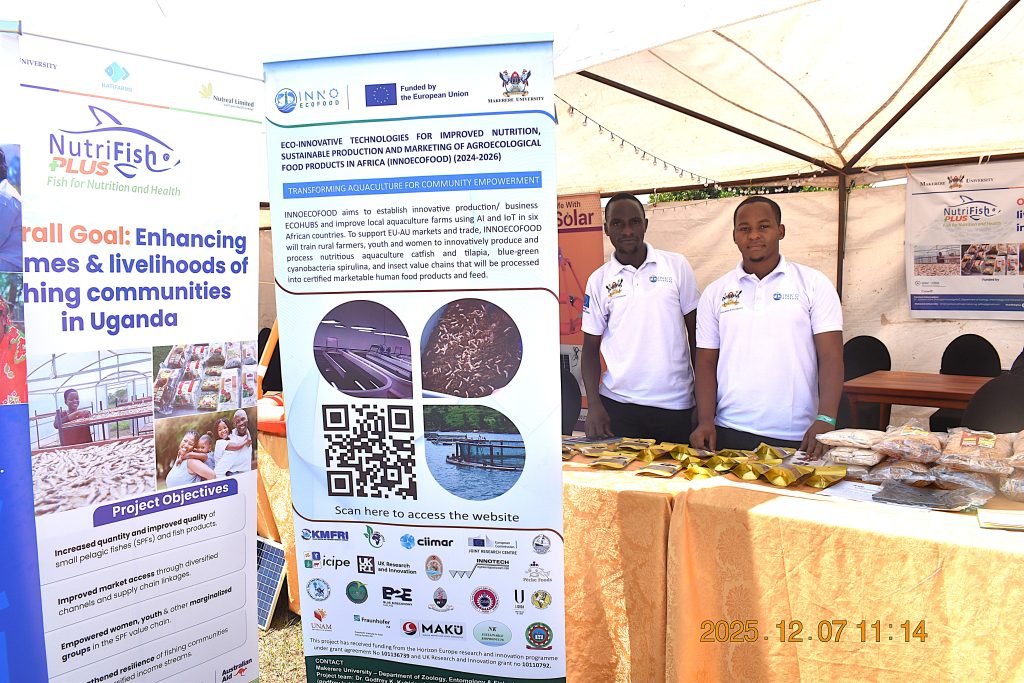
NutriFishPlus Phase II
Funded by the International Development Research Centre (IDRC) and the Australian Centre for International Agricultural Research (ACIAR) under CultiAF2, the NutriFishPlus Project aims to scale up Phase I activities to further enhance incomes and livelihoods of Uganda’s fishing communities.
Launched on 28th October 2025, the 32-month project will run until March 2028. Its objectives include:
- Scaling up sustainable fishing technologies, including solar tent driers and raised racks, to reach new communities.
- Strengthening market access and supply chain linkages for high-quality fish and fish-based products.
- Empowering women and vulnerable groups through diversified income-generating activities.

Implemented by the Department of Zoology, Entomology, and Fisheries Sciences at Makerere University, in collaboration with Nutreal Ltd and Kati Farms Ltd, the project is led by Dr. Jackson Efitre (Principal Investigator).
Expected outcomes include:
- Improved livelihoods and incomes for marginalized fishing groups, especially women and youth.
- Better health and nutrition through diversified, market-driven fish products.
- Sustainable fish processing and marketing models replicable across Uganda and the East African region.
- Enhanced participation of women and youth in decision-making and benefit-sharing within the Small Pelagic Fishes (SPFs) value chain.
- Strengthened community resilience and ecosystem health through participatory approaches.
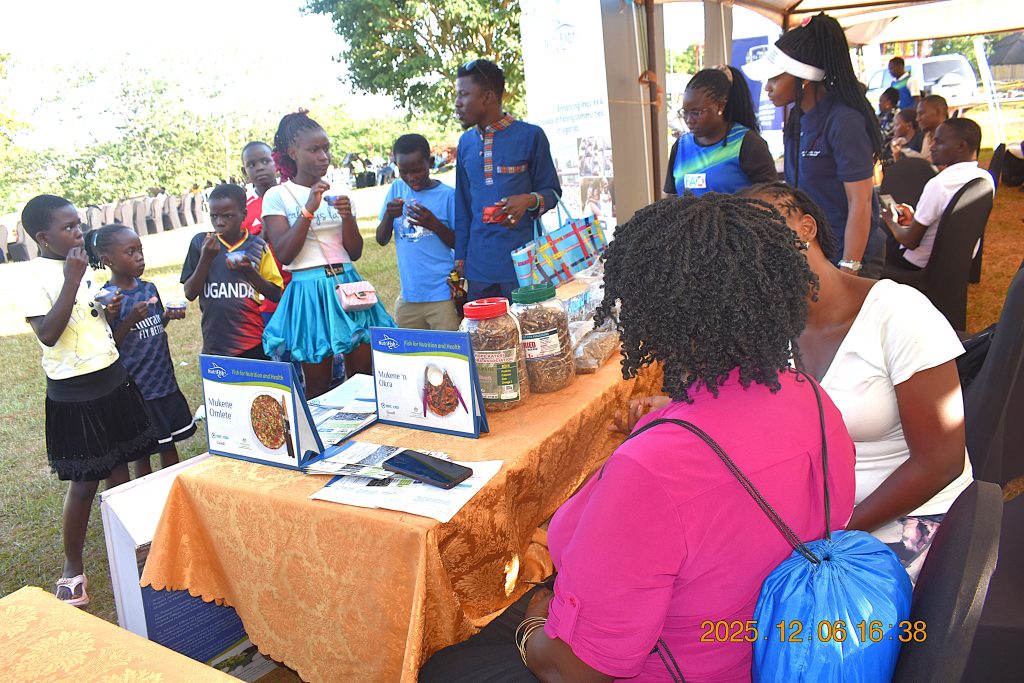
Project activities will be conducted at five landing sites around Lakes Victoria, Kyoga, and Albert: Katosi and Kikondo (Mukono and Buikwe districts), Bangaladesh and Kayago (Amolatar District), and Dei (Pakwach District).
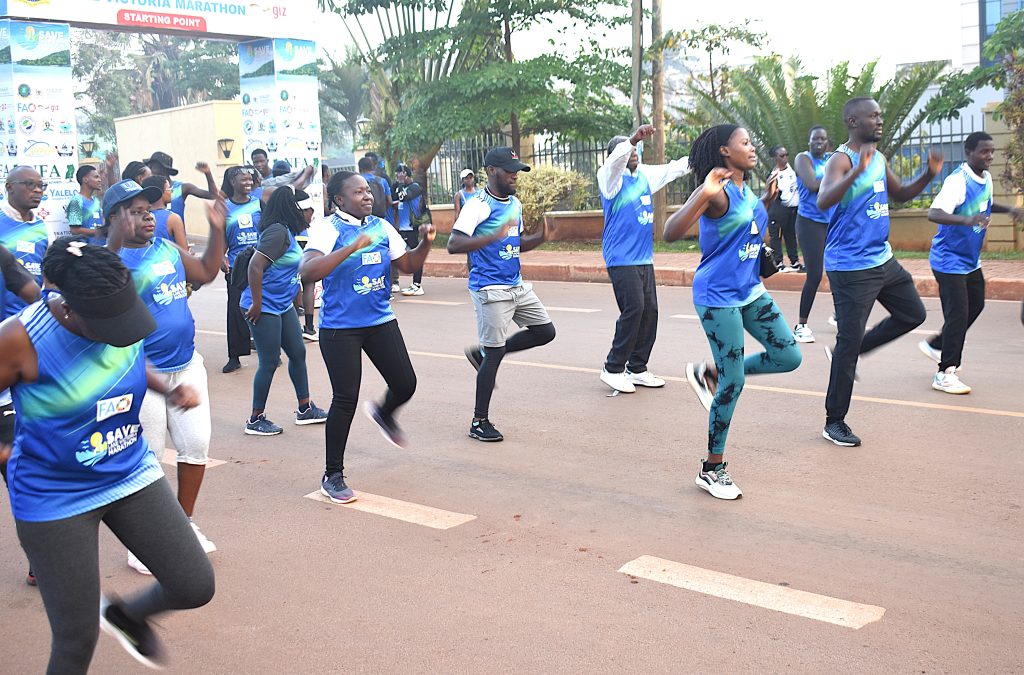
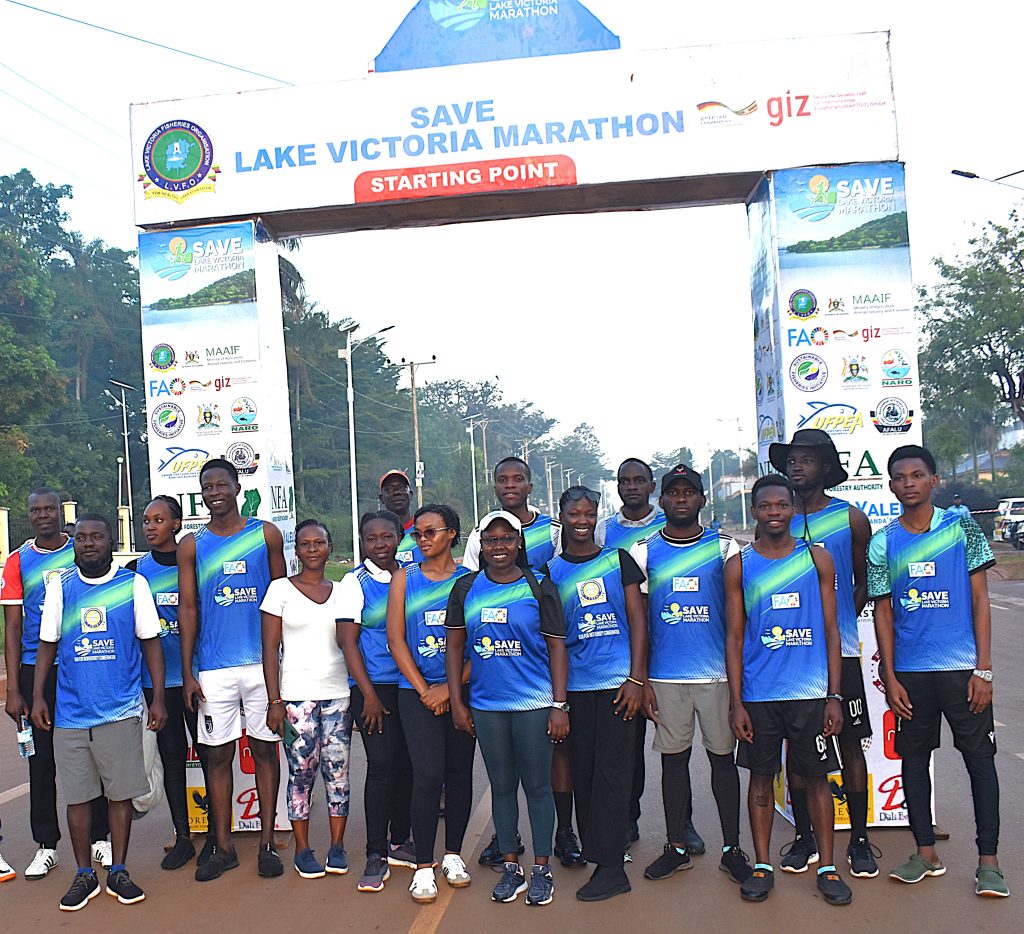
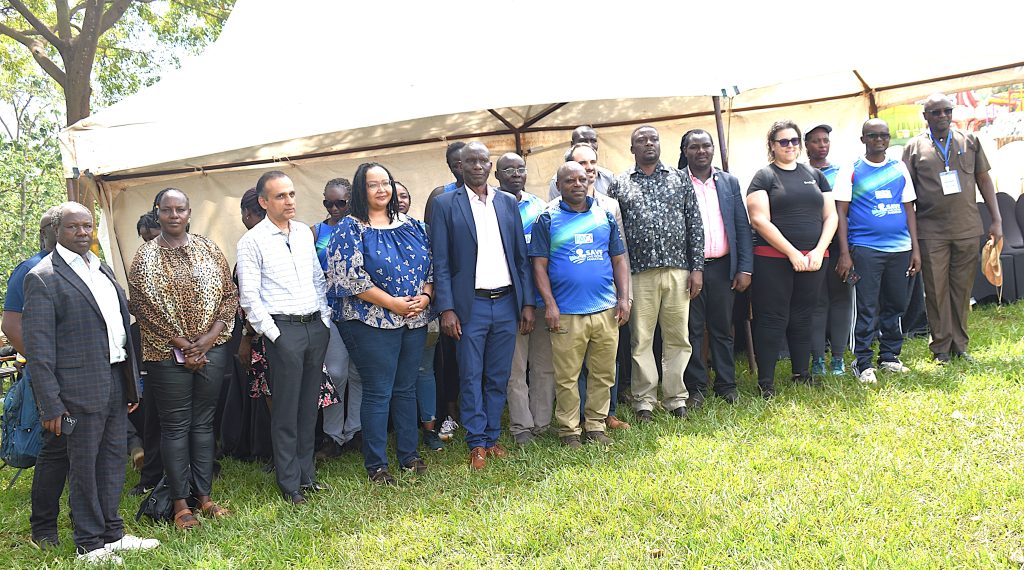
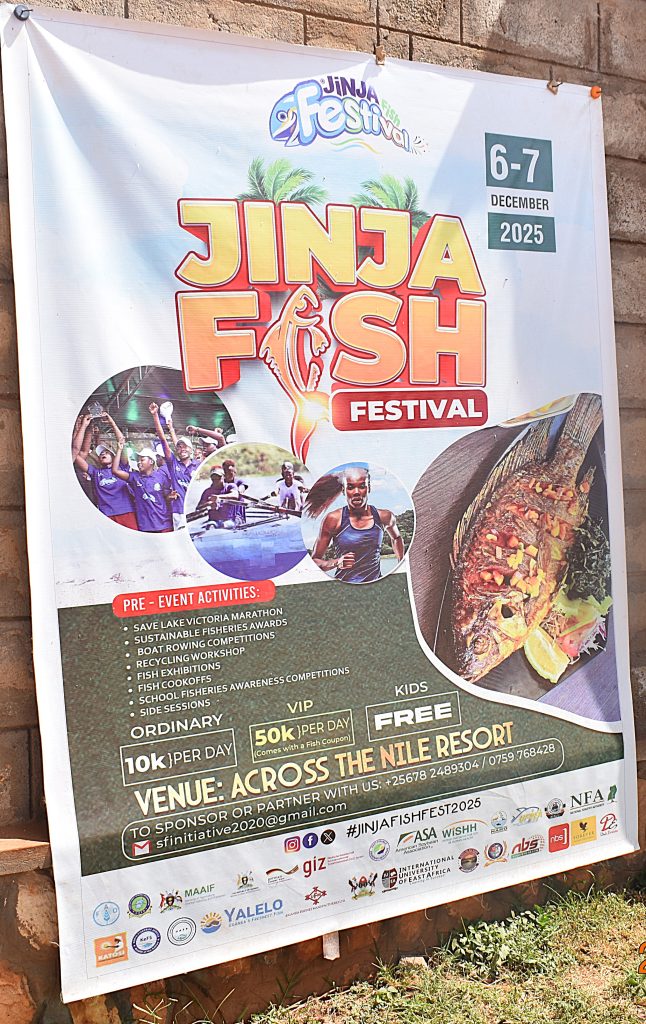
Natural Sciences
Mak-CoNAS Launches NutriFishPlus Project
Published
2 months agoon
October 30, 2025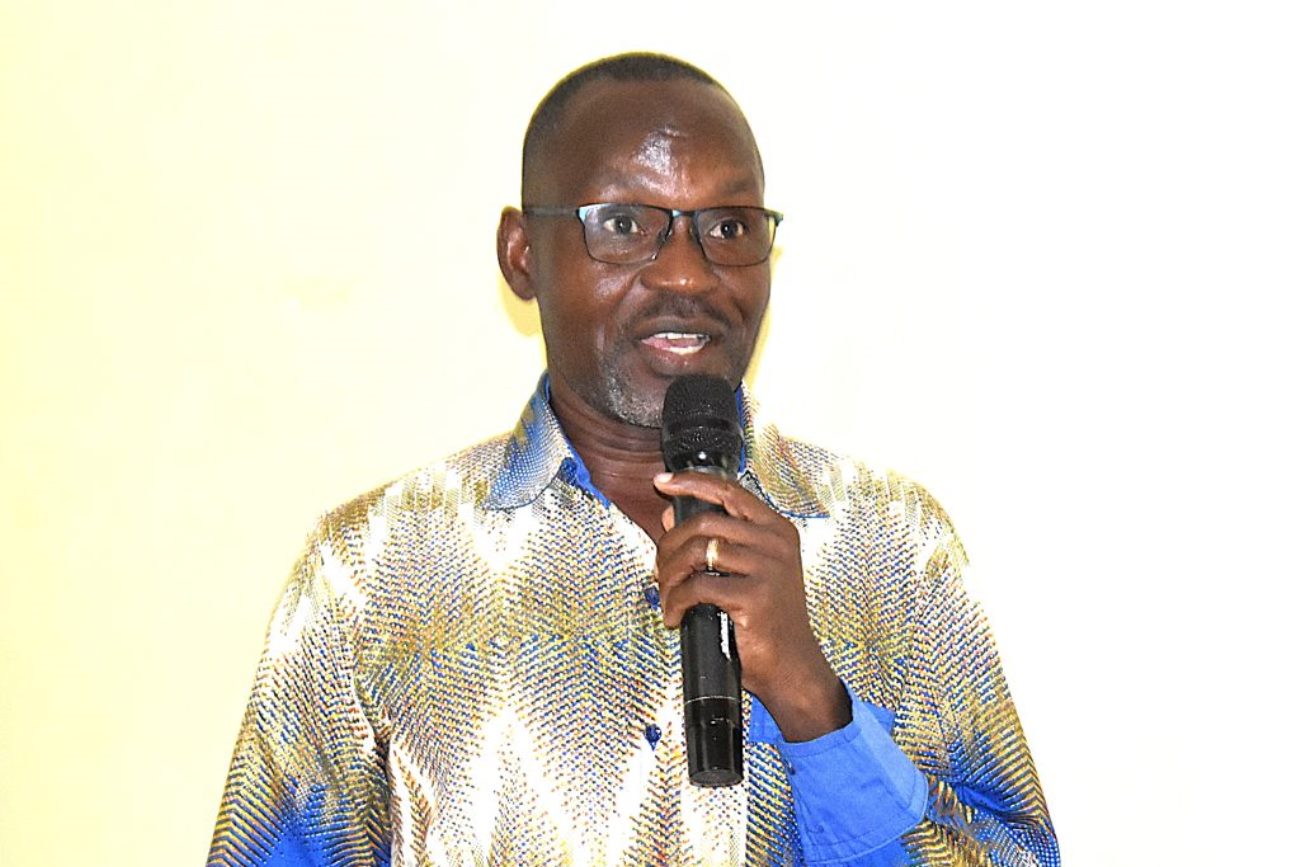
*****The project was officially launched on 28th October 2025, followed by planning meetings on 29th and 30th. It will be implemented at landing sites around Lakes Victoria, Kyoga and Albert.
Following the successful implementation of the NutriFish Project ( 2019-2023), Makerere University has been awarded a new grant worth about UGX2 Billion to expand activities and deepen community impact through the NutriFishPlus Project.
Funded by the International Development Research Centre (IDRC) and the Australian Centre for International Agricultural Research (ACIAR) under the Cultivate Africa’s Future Fund Phase II (CultiAF2), the NutriFishPlus Project seeks to enhance the incomes and livelihoods of fishing communities in Uganda.
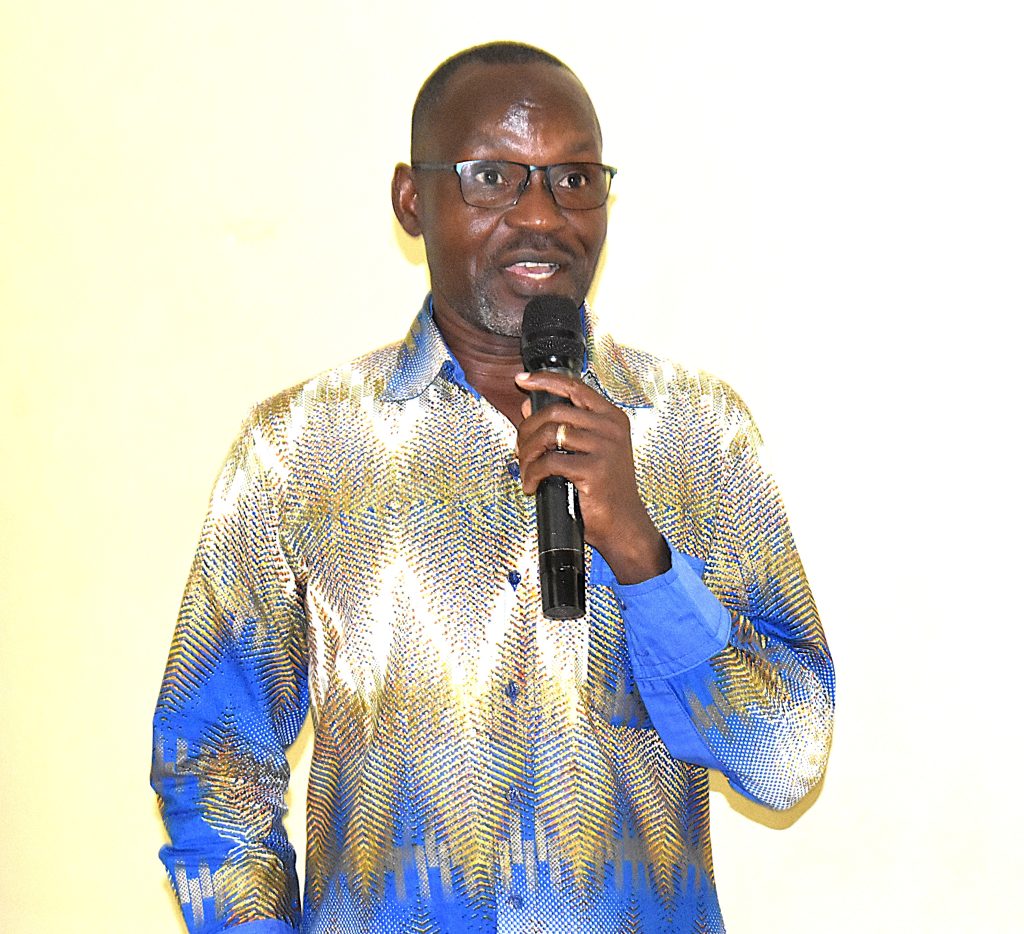
The project was officially launched on 28th October 2025 by the Ag. Deputy Vice Chancellor (Finance and Administration) at Makerere University, Prof. Winston Tumps Ireeta. Building on the achievements of phase one, NutriFishPlus will focus on:
- Scaling up the use of improved and sustainable fishing technologies, including solar tent driers and raised racks, to reach new communities across Uganda.
- Enhancing market access and strengthening supply chain linkages for high-quality fish and fish-based products.
- Empowering women and other vulnerable groups and strengthening community resilience through diversified income-generating activities.
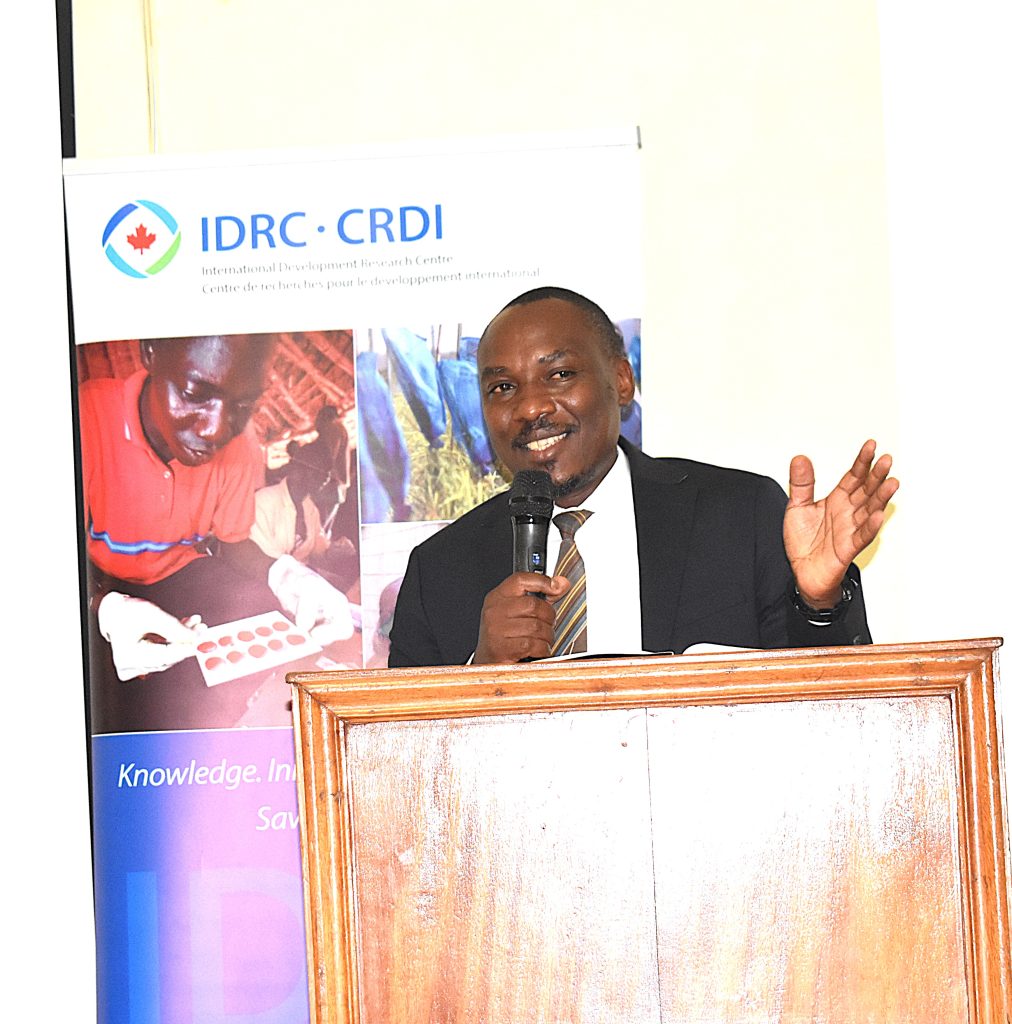
The project is expected to deliver the following outcomes:
- Improved incomes and livelihoods for the marginalized fishing groups, particularly women and youth.
- Better health and nutrition outcomes through the development of diversified, market-embedded fish products.
- Establishment of sustainable fish processing and marketing models that can be replicated across Uganda and the East African region.
- Improved participation of women and youth in decision-making and benefit-sharing within the Small Pelagic Fishes (SPFs) value chain.
- Enhanced socioeconomic conditions and ecosystem health through participatory and scalable approaches.
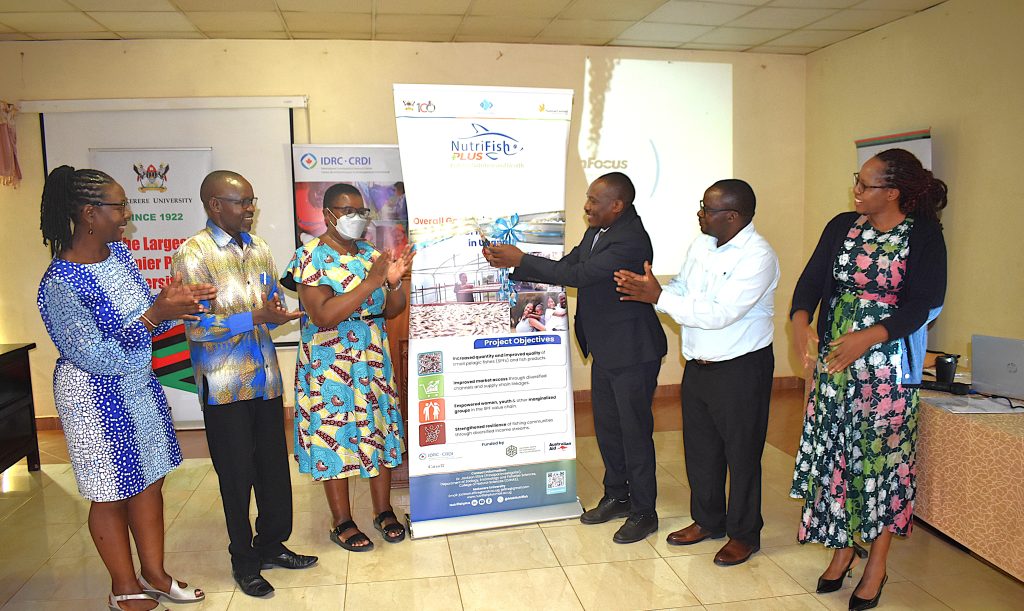
The project will run from September 2025 to March 2028 and will be implemented by the Department of Zoology, Entomology, and Fisheries Sciences at Makerere University, in collaboration with two private companies (Nutreal Ltd and Kati Farms Ltd) under a public-private partnership. Project activities will be carried out at five landing sites around Lakes Victoria, Kyoga and Albert. These include Katosi and Kikondo landing sites in Mukono and Buikwe districts respectively, Bangaladesh and Kayago landing sites in Amolatar District, and Dei landing site in Pakwach District. The project will be coordinated by Dr Jackson Efitre, Senior Lecturer at the Department of Zoology, Entomology, and Fisheries Sciences at Makerere.
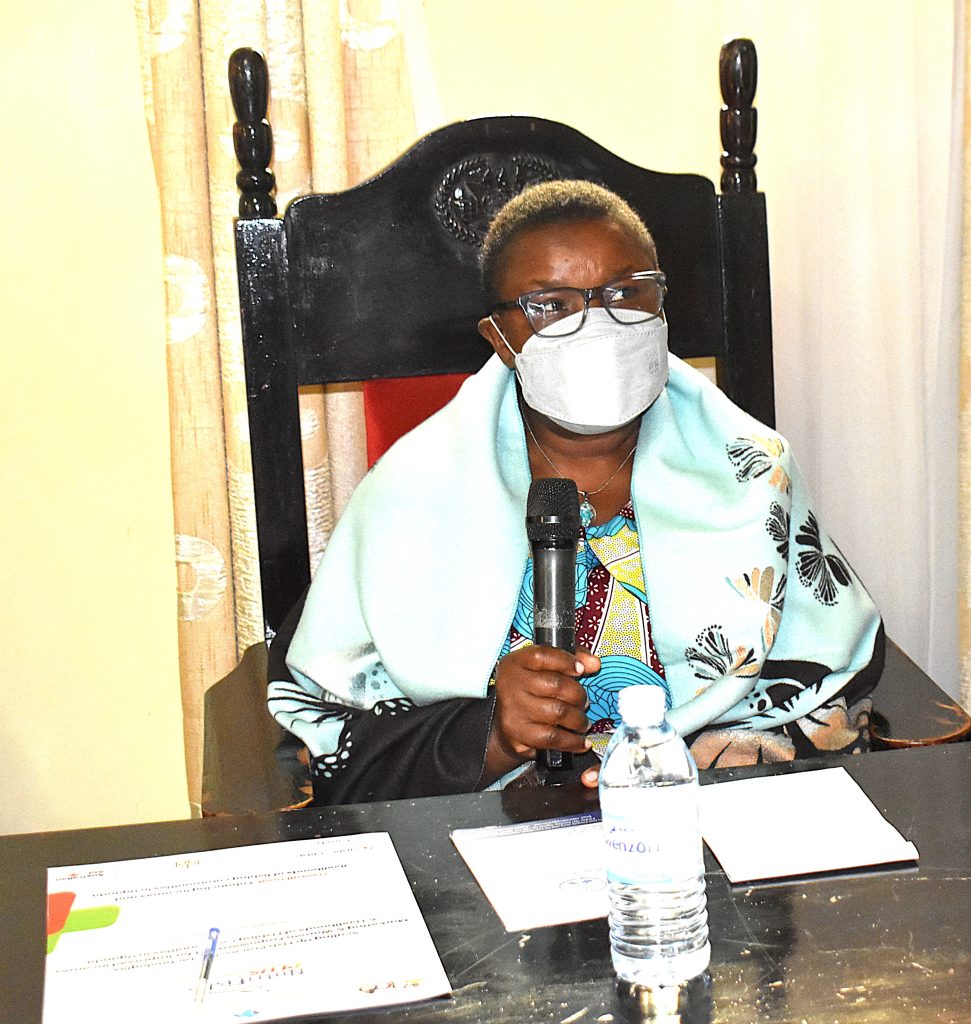
Inception and planning meetings
The NutriFishPlus Project team convened a three-day stakeholder engagement from 28th to 30th October 2025 to officially launch the project and collaboratively develop an implementation plan.
The workshop brought together a wide range of participants, including government representatives, researchers, private sector actors, and development partners. The primary objective was to foster a shared understanding of the project’s overarching goals, and design strategic pathways for achieving sustainable scaling and impact.
Discussions focused on deepening understanding of the scaling journey, and the interconnections among the different work packages and their respective pathways to scale. Participants explored how adaptive and transformative approaches can be integrated into the project’s dynamic monitoring, evaluation and learning (MEL) framework.
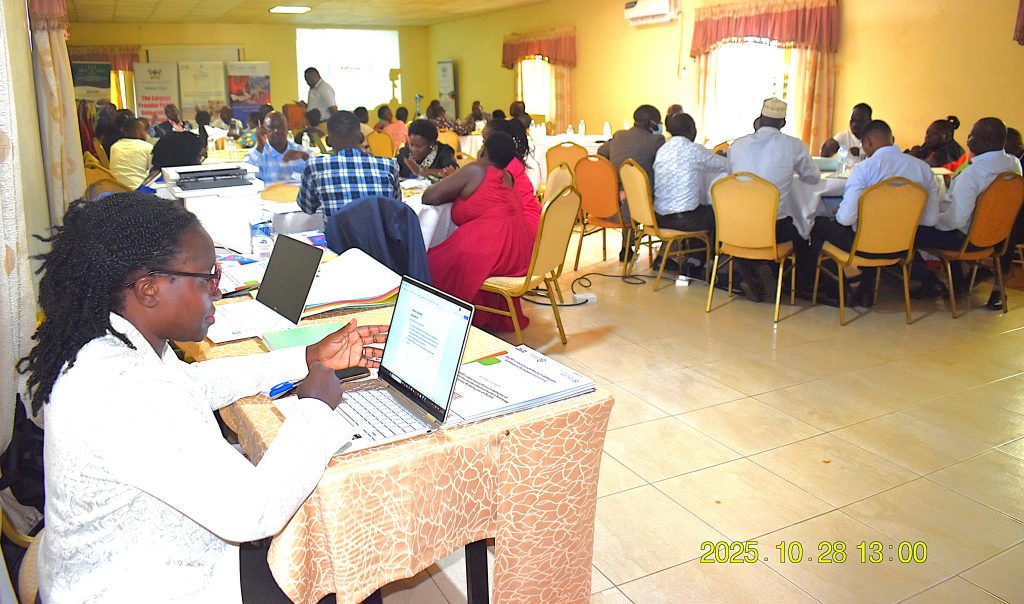
The team also reviewed the existing outputs and outcomes to identify key evidence that can inform adaptive monitoring. Through collaborative dialogue, stakeholders worked to identify appropriate indicators and progress markers that reflect the project’s adaptive learning and scaling dimensions, ensuring alignment with both the project objectives and national development priorities.
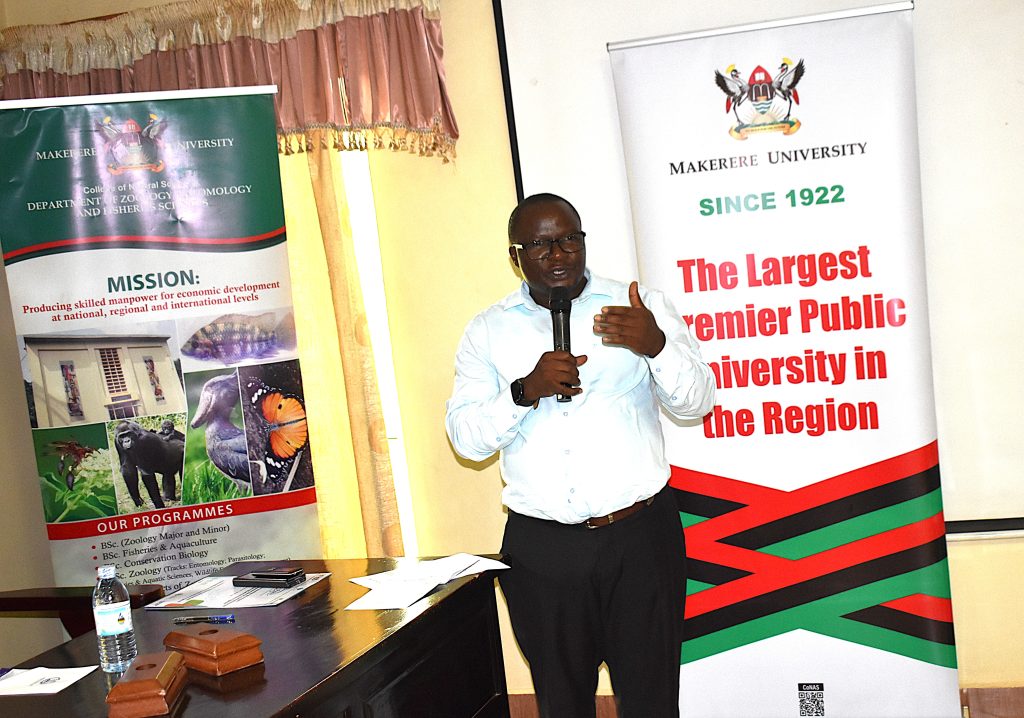
A major outcome of the workshop was the joint development of a detailed implementation plan for the project’s four interlinked work packages, which aim to:
- Enhance nutrition and health outcomes among vulnerable groups through the diversification of fish products and market innovations;
- Promote alternative and resilient livelihoods within small-scale fisheries and related value chains;
- Advance inclusivity and participation of marginalized groups, particularly women and youth in the Small Pelagic Fishes value chain through policy reform, advocacy, and enforcement; and
- Strengthen fish processing technologies and post-harvest management practices to improve food safety, quality, and value addition.
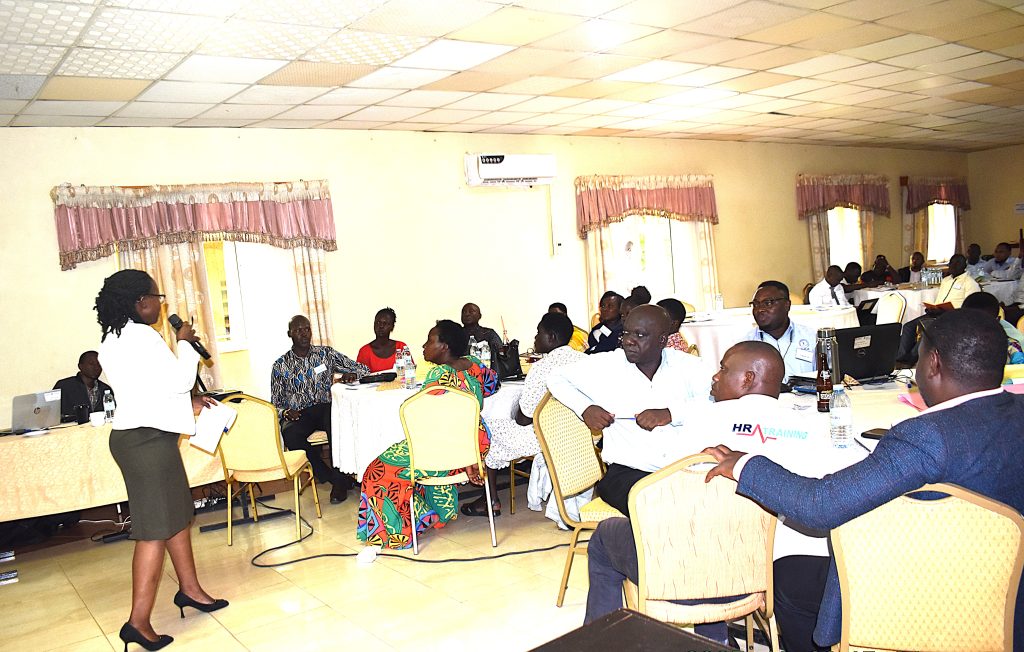
Overall, the inception workshop provided a strong foundation for coordinated implementation of the project, and established a clear roadmap for achieving the NutriFishPlus vision of improving nutrition, livelihoods, and sustainability through fisheries-based innovations.
Remarks by the University officials and development partners
Addressing the participants, the Guest of Honour, Prof. Winston Tumps Ireeta, Deputy Vice Chancellor in charge of Finance and Administration at Makerere University, commended the project team for the achievement. He also expressed gratitude to the project funders – the International Development Research Centre (IDRC) and the Australian Centre for International Agricultural Research (ACIAR) – for their steadfast support and dedication to improving the livelihoods of fishing communities in Uganda. “The NutriFishPlus project highlights Makerere University’s commitment to being a research-driven institution,” he said. “It also strengthens the University’s leadership in translating research into tangible, real-world outcomes that drive sustainable development and enhance public health.” On behalf of Makerere University Management, Prof. Ireeta assured continued support for the successful implementation of the project.
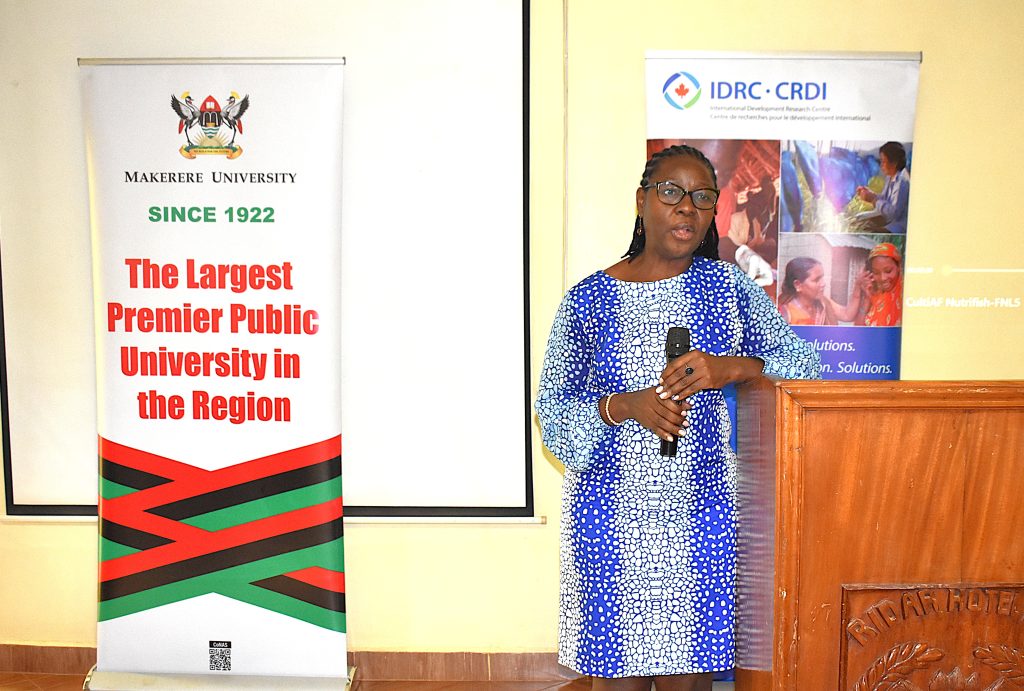
Dr. Edidah Lubega Ampaire, Senior Programme Specialist at the International Development Research Centre (IDRC), congratulated the project team upon securing the second grant. She emphasized that the IDRC is committed to supporting applied research that delivers tangible benefits to communities, noting that the team had demonstrated this through their success with the NutriFish project. “The IDRC invests in research that has the potential to transform livelihoods,” Dr. Ampaire said. “We look forward to seeing how the NutriFishPlus Project will build upon the achievements of the previous phase to scale up impact beyond the pilot phase. It is equally important that the project contributes to fostering meaningful policy reforms and strengthening enforcement mechanisms to ensure long-term, sustainable outcomes.”
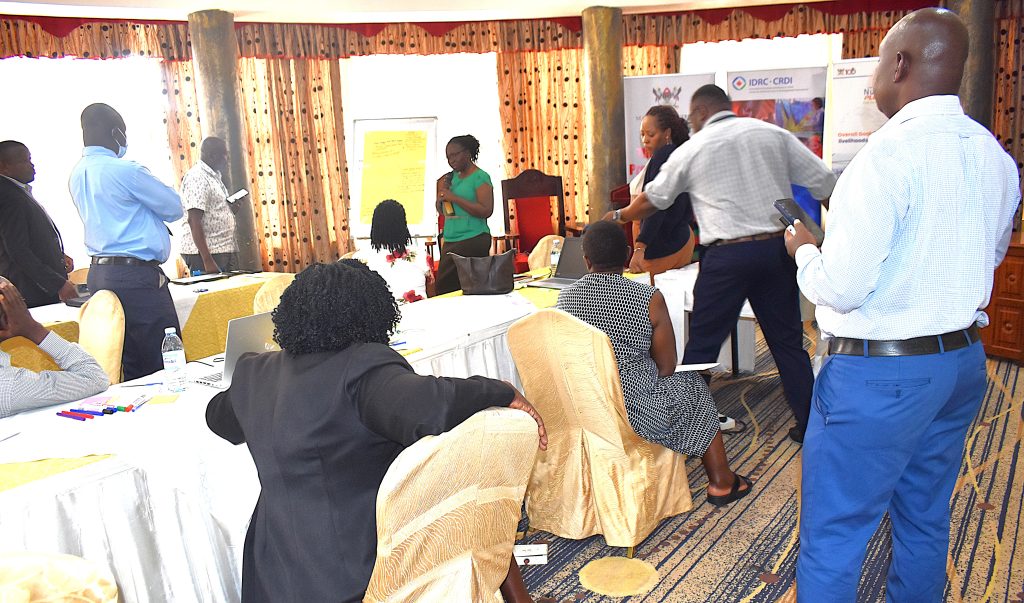
During the session, Ms. Dena Lomofsky, an experienced researcher and MEL expert, guided participants through the key components of scaling science. Her presentation explored the theoretical foundations, guiding principles, and strategic approaches required to transform research findings into scalable and sustainable solutions.
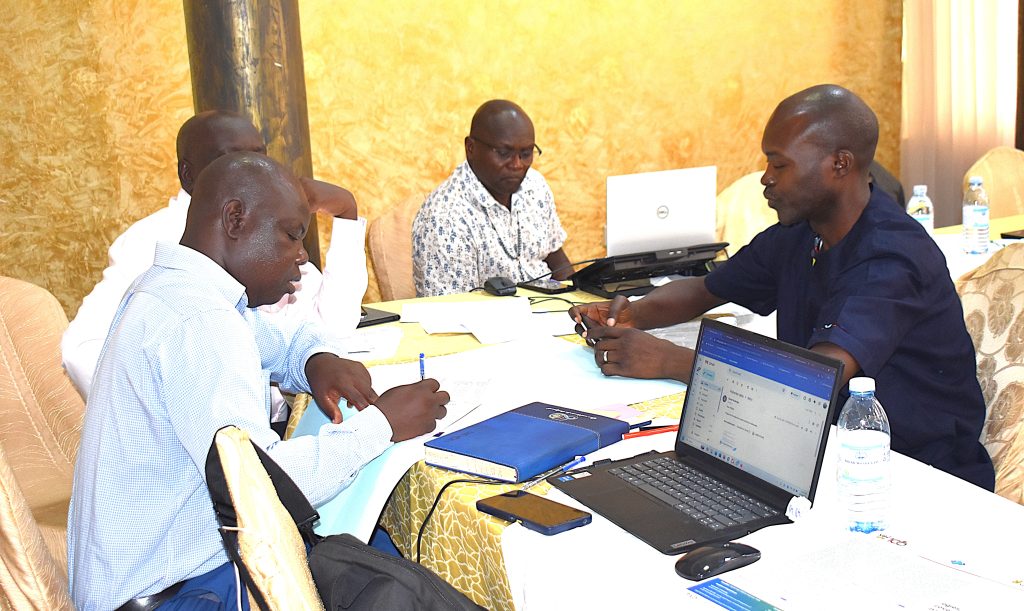
Briefing participants on their activities, Dr. Dorothy Nakimbugwe from Nutreal Ltd, a private company collaborating with the NutriFishPlus Project, underscored the crucial role of private sector involvement in research initiatives. She emphasized that engaging private enterprises not only enhances the practical application of research outcomes but also plays a pivotal role in scaling innovations and maximizing their impact.
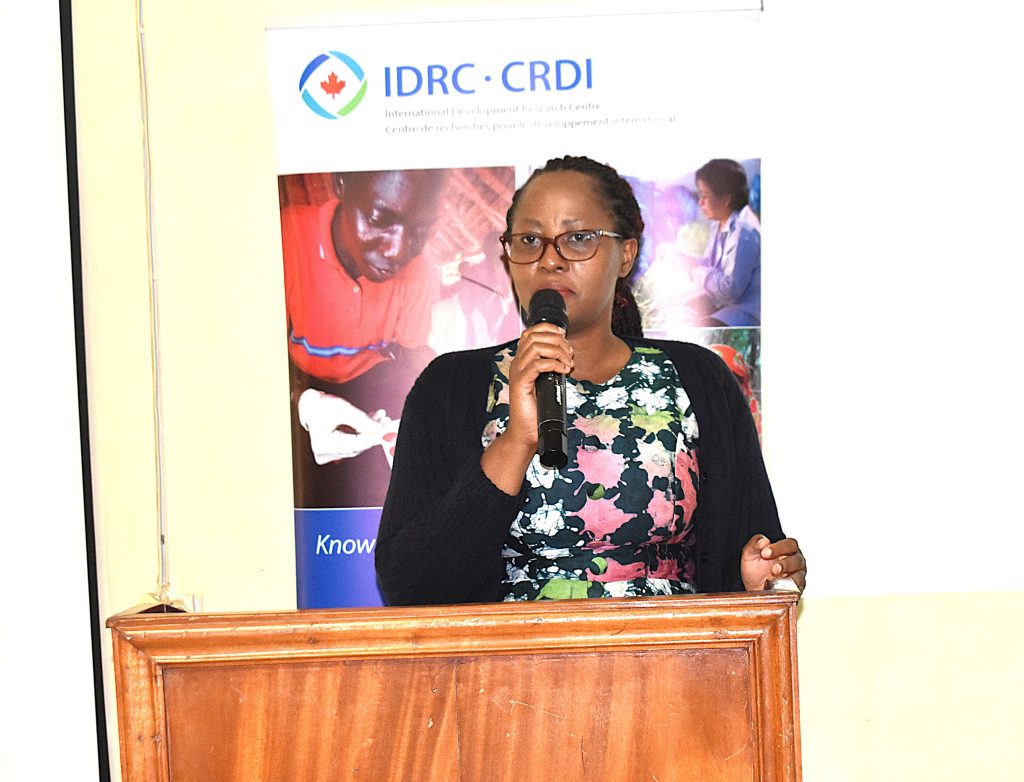
Ms. Lovin Kobusingye of Kati Farms Ltd expressed gratitude to the project team and funders for the initiative. “At Kati Farms, we are truly honored to be part of this journey. Our passion has always been to transform Uganda’s fisheries sector through value addition, innovation, and inclusive growth. The NutriFishPlus Project aligns perfectly with this mission, as it aims to improve the incomes and livelihoods of fishing communities through diverse interventions. As Kati Farms, our commitment is to ensure that the products developed under this project meet the highest quality standards and reach both local and international markets. Together, as partners, let us move forward with a shared vision, to make NutriFishPlus not just a research project, but a transformative movement that uplifts fishing communities, enhances nutrition, and promotes gender equality within and beyond our borders.”
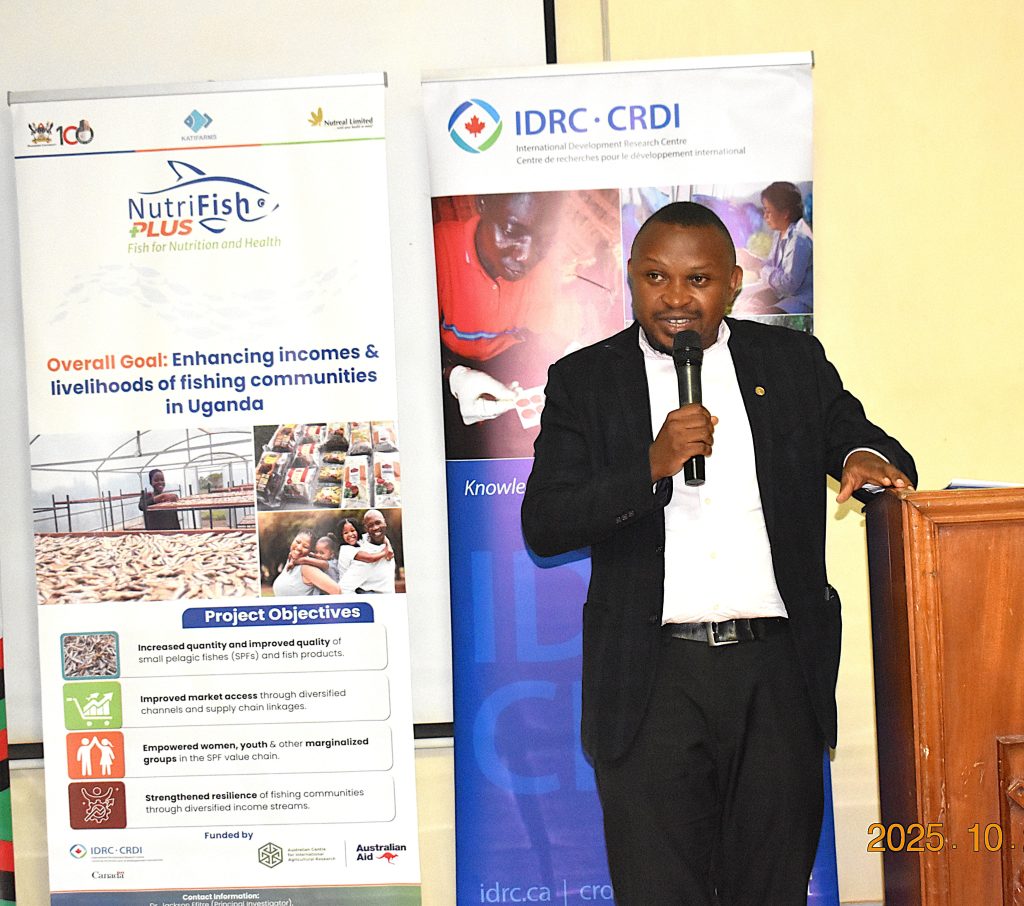
Mr. Isaac Kirabira from the Ministry of Agriculture, Animal Industry, and Fisheries expressed the Ministry’s commitment to supporting the project, emphasizing that empowering women, youth, and other vulnerable groups is essential not only for improving livelihoods but also for restoring dignity.
In his remarks, Dr. Godfrey Kawooya Kubiriza, Head of the Department of Zoology, Entomology, and Fisheries Sciences at Makerere University, equally appreciated the project team and the funders. “Our Department is proud to contribute to the NutriFishPlus Project. Initiatives of this nature provide a valuable platform for translating our research into practical solutions that reach communities, thereby creating meaningful and tangible impact.”

Achievements registered during Phase One
The achievements included:
- Establishing group savings schemes to improve access to capital by women and youth;
- Piloting solar tent dryers for processing silver fish (mukene), resulting in doubling of women’s incomes and tripling of the shelf-life to almost five months;
- Developing and test-marketing certified, nutrient-enriched fish products, including baby food, sauce and fortified maize meal;
- Conducting comprehensive social and behavioural change interventions, leading to increased women’s participation in profitable ventures and 30% reduction in domestic violence in intervention areas.
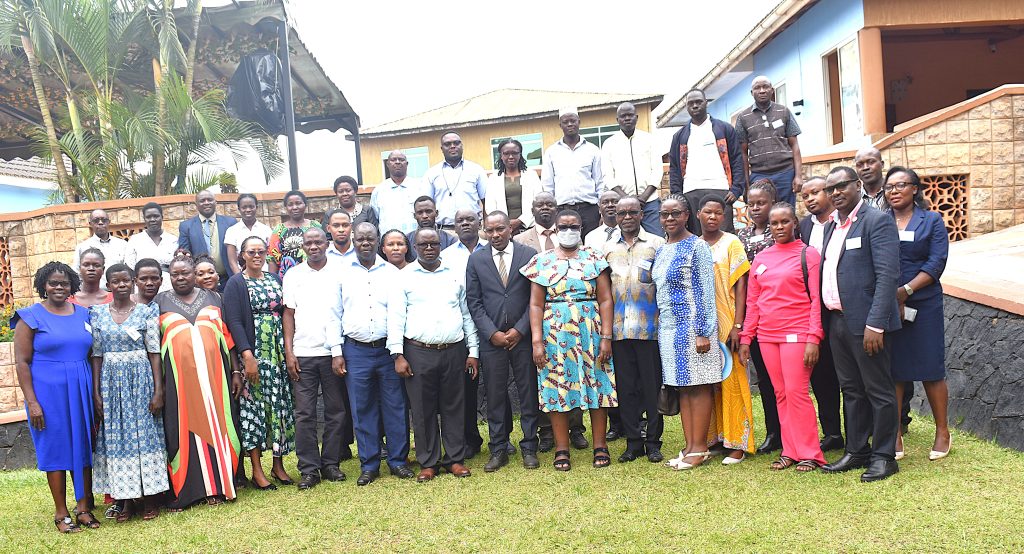
Link to the workshop pictorial: https://drive.google.com/drive/folders/1Wwd9kSsKpd6aZ6YrFL1uVveh2BSG36cV?usp=sharing
Natural Sciences
Mak-CoNAS Wins CAD 0.8 Million Grant to Scale-up Fish Processing Technologies & Empower Women in Uganda
Published
2 months agoon
October 27, 2025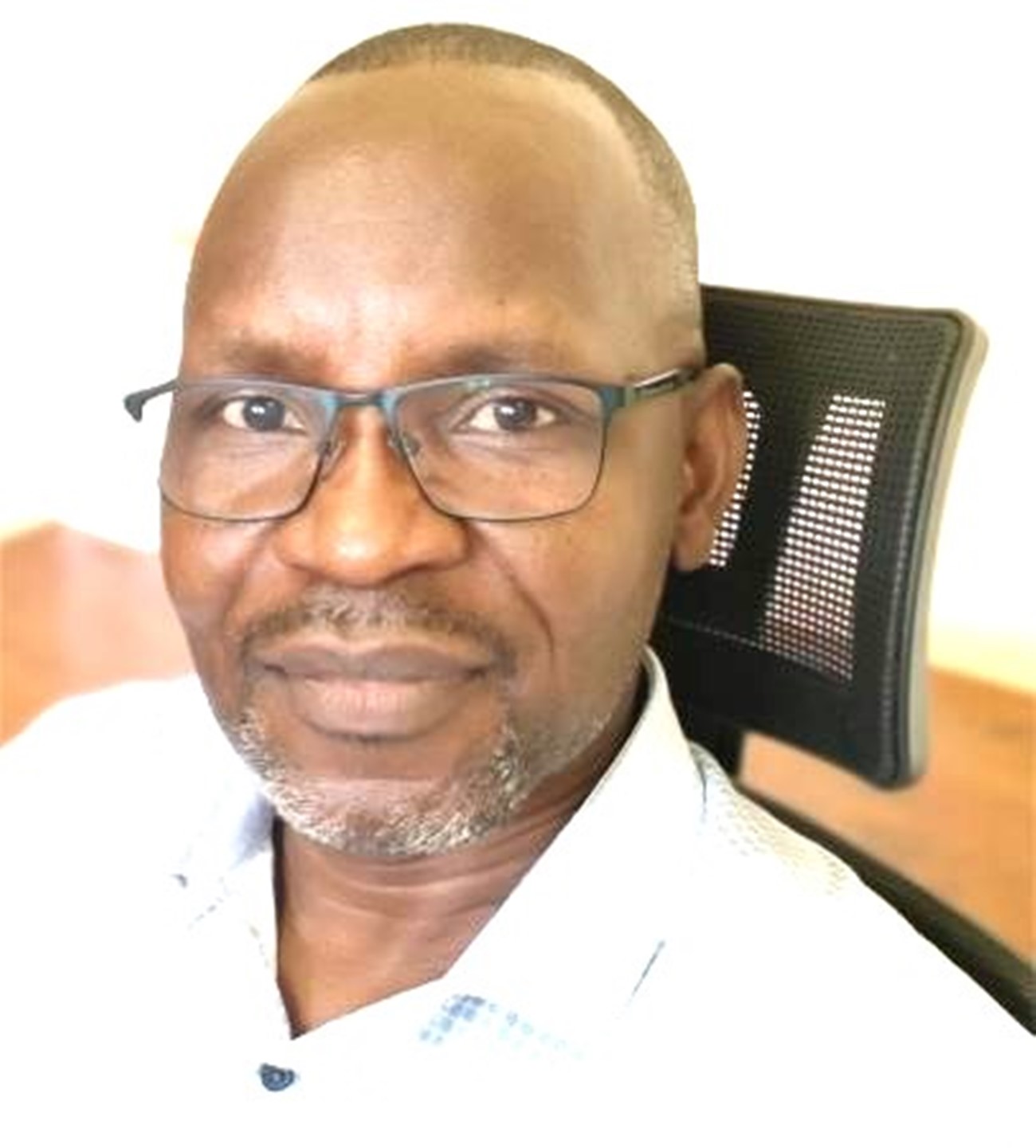
The College of Natural Sciences (CoNAS) at Makerere University has been awarded a highly competitive research grant worth CAD 0.8 million to implement the “NutriFishPLUS” project, which aims to scale up innovative fish processing technologies, improve market access, and empower women in Uganda’s fishing communities to boost incomes and livelihoods.
This project builds on the significant achievements of the previous ground-breaking NutriFish project (2019–2023), funded by the International Development Research Centre (IDRC) and the Australian Centre for International Agricultural Research (ACIAR) through the Cultivate Africa’s Future Fund Phase (CultiAF2). The achievements included: 1) establishing group savings schemes to improve access to capital by women and youth; 2) piloting solar tent dryers for processing silverfish (mukene), resulting in doubling of women’s incomes and tripling of the shelf-life to almost five months; 3) developing and test-marketing certified, nutrient enriched fish products, including baby food, sauce and fortified maize meal; 4) conducting comprehensive social and behavioural change interventions, leading to increased women’s participation in profitable ventures and 30% reduction in domestic violence in intervention areas. Despite these achievements, gaps still remain with regard to increasing production of high-quality Small Pelagic Fishes (SPFs) through adoption of solar tent dryers and raised drying racks; enhancing capacity of men, women and the youth in processing, packaging, branding and marketing; improving access to capital and lucrative markets for fish and fish products; and empowering women, youth and other marginalized groups in the small fish value chain; and strengthening resilience of fishing communities through diversified income streams.
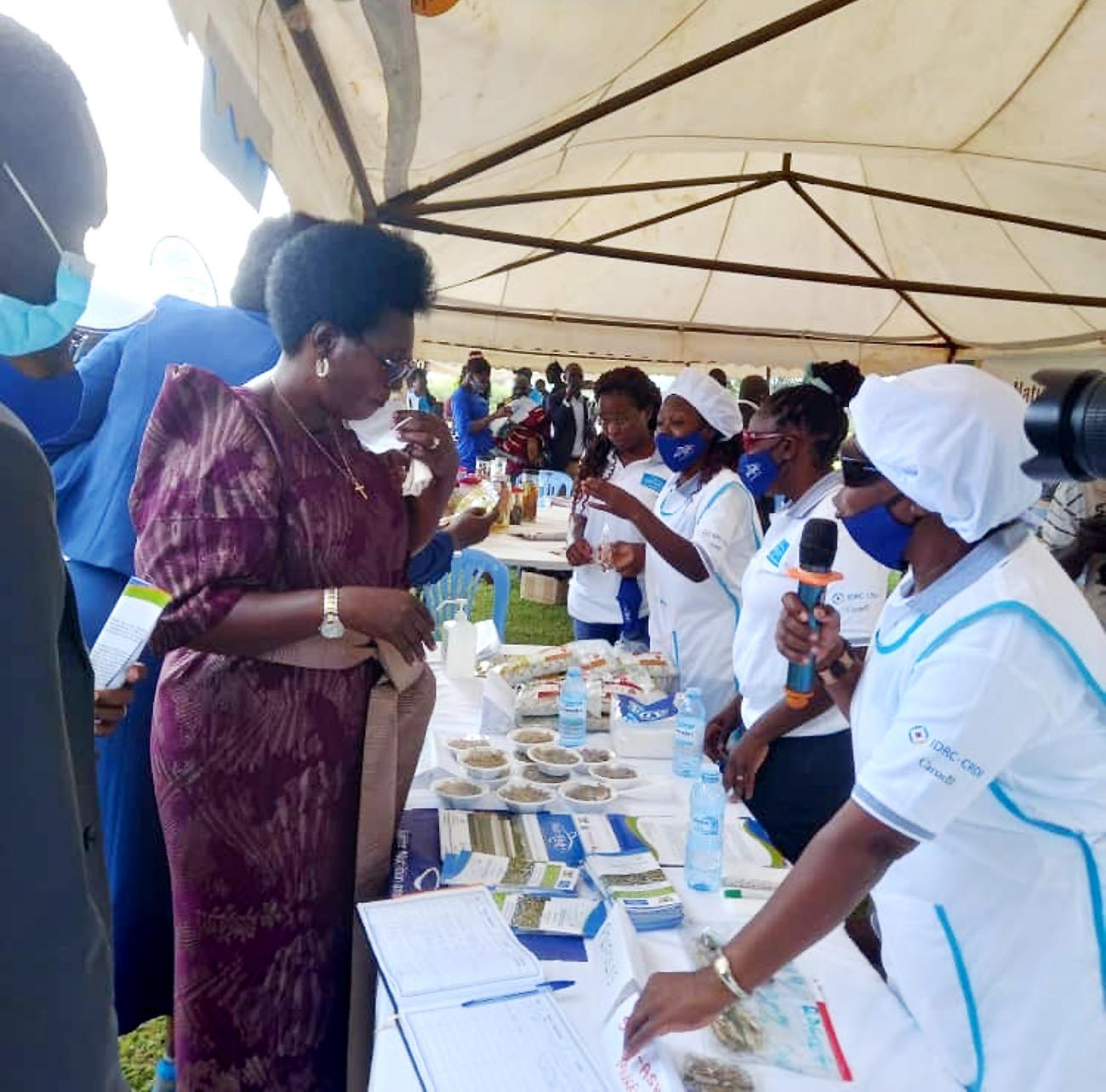
NutriFishPLUS will be implemented by the Department of Zoology, Entomology and Fisheries Sciences, CoNAS, in collaboration with two private companies (Kati Farms and Nutreal) through a public-private partnership. The Principal Investigator is Dr. Jackson Efitre and his team will focus on scaling-up the use of improved, sustainable fish processing technologies such as the solar Tent dryers and raised racks to new communities across Uganda; enhancing market access and supply chain linkages for high-quality fish and fish products; as well as deepening women’s empowerment and strengthening the resilience of fishing communities through diversified income streams. The project is expected to run for September 2025- March 2028. The expected outcomes include: enhanced incomes and livelihoods for marginalized fishing groups, particularly women and youth; improved health and nutrition for vulnerable groups through diversification of fish products that are embedded in the market with strong supply chain linkages; sustainable fish processing and marketing models that can be scaled across Uganda and the East African region; improved women and youth participation in decision making and control of benefits in the SPF value chains; and improved socioeconomic conditions and ecosystem health through participatory, scalable approaches.
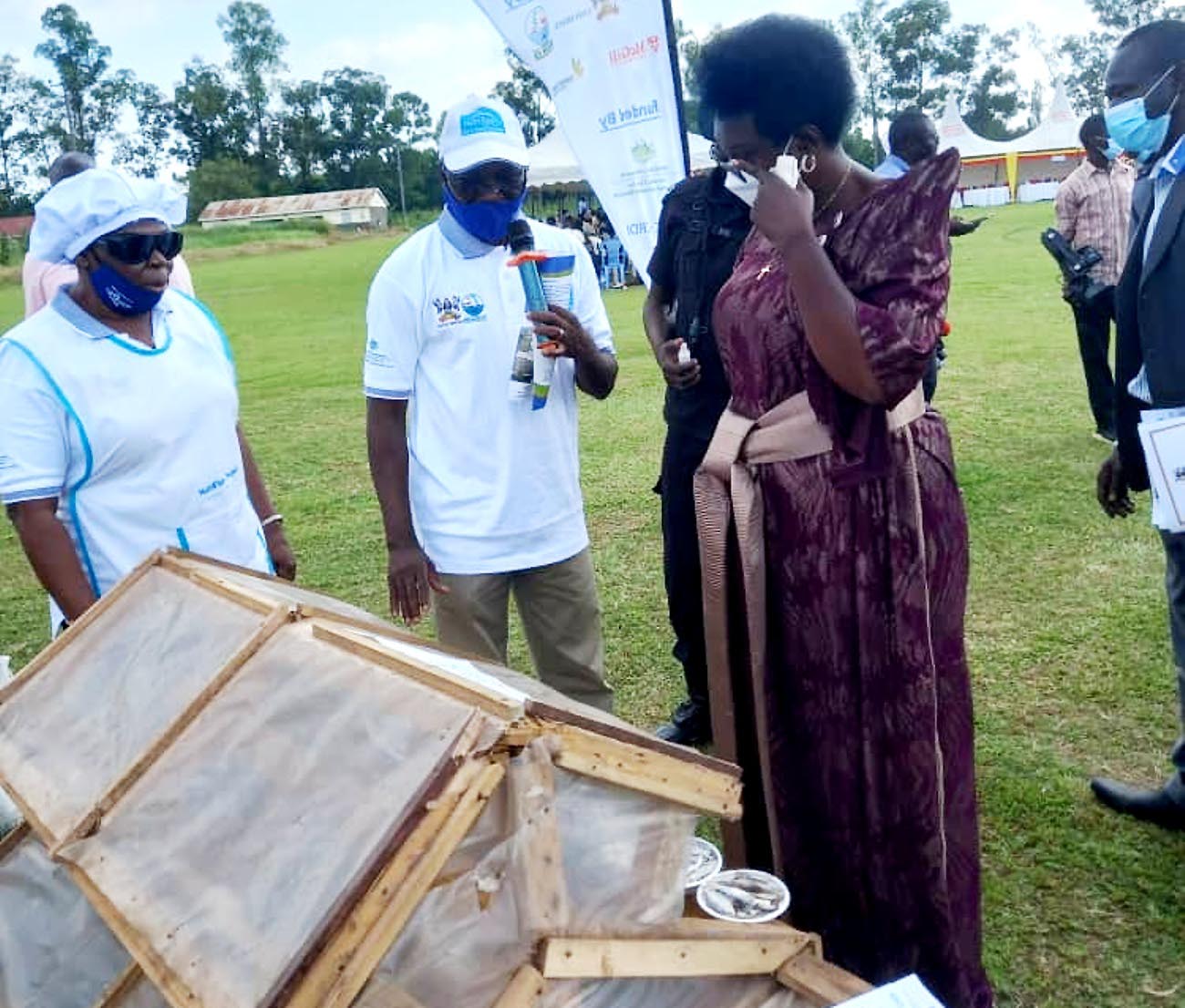
“Winning this competitive grant is an incredible opportunity for the team to solidify the achievements of the first phase as the funding enables us to move beyond research to embed these nutritional and technological solutions into the livelihoods of local communities,” said Dr. Efitre. “I am privileged to lead this impactful work on behalf of Makerere University. Scaling up these tested, climate-responsive technologies as well as empowering the women and youth will secure better nutrition and more sustainable livelihoods across fishing communities in Uganda.”
The project is set to be launched tomorrow, Tuesday, 28th October 2025 by the Acting Deputy Vice Chancellor, Finance and Administration and Principal, CoNAS, Prof. Winston Tumps Ireeta.
Please see below for details on the project.
Details on the previous project: https://news.mak.ac.ug/2023/03/nutrifish-project-registers-significant-achievements/
Trending
-

 Research1 week ago
Research1 week agoMakerere University Launches Knowledge-Sharing Platform to Drive Innovation and Economic Growth
-

 General1 week ago
General1 week agoMakerere University Leaders Call for Excellence in Research and Supervision as Academic Staff and PhD Students Receive Certificates
-

 Health2 weeks ago
Health2 weeks agoMakerere University Explores Strategic Partnership with Tsinghua University in Safety Science, Disaster Resilience and Public Health
-

 General2 weeks ago
General2 weeks agoFrom Knowledge to Impact: Empowering Youth Leaders and Young Women with Transformative Leadership Skills
-
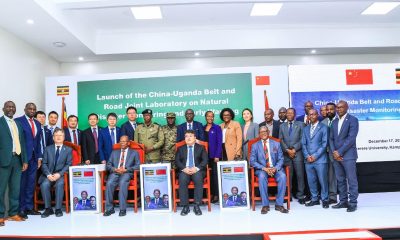
 Health1 week ago
Health1 week agoMakerere University and Tsinghua University Launch Landmark China–Uganda Joint Laboratory on Natural Disaster Monitoring and Early Warning
